American Essence
FOR EVERYONE WHO LOVES THIS COUNTRY
Grit and Faith: The Story of In-N-Out
The Eclectic Charm of Mark Twain’s Home

SING FROM THE HEART
Billboard-charting country singer RaeLynn is not afraid to let you know that she loves her country, family, and faith fiercely
MARCH – APRIL 2024
LimitedPreview ofSelectedContent
“Renewal is not just innovation and change. It is also the process of bringing the results of change into line with our purposes.”
John W. Gardner


2 | AMERICAN ESSENCE MARCH – APRIL 2024

Great Craggy Mountains
Along the Blue Ridge Parkway, N.C.
CONTENTS
First Look
12 | Bring Your A Game
The best golf resorts in America.
Features
14 | Proud Country Girl
RaeLynn believes good songwriting is good storytelling. She reveals how the country genre has allowed her to tell her story.
22 | Undaunted
Quadruple amputee Travis Mills teaches people how to develop a mindset that can overcome whatever challenges lie ahead.
26 | The Heart of In-N-Out
How the Snyder family built the iconic burger chain from a humble hamburger stand, and what third-generation president Lynsi Snyder has planned for the future.
32 | Wins and Losses
Life lessons from legendary college football coach Lou Holtz.
36 | Heroic Nurses
A legacy of compassion and care by a group of women who became nurses during the World War II era.
40 | For the Love of Dance
A Nigerian woman comes to America with a dream to help young girls in her home country get educated and develop their passion.


14
History
44 | Against All Odds
The decorated war hero Sgt. Alvin C. York bravely fought against the Germans during World War I despite being outnumbered.
48 | Godfather of the Marine Band
Thomas Jefferson’s inauguration ceremony ushered in a uniquely American musical tradition.
52 | How Basketball Was Invented
Using sports as a focus for ministry, James Naismith invented basketball to teach athletes Christian moral values.
56 | A Miracle Surgery
The life of Dr. Daniel Hale Williams, the talented surgeon who performed the first successful open-heart surgery.
4 | AMERICAN ESSENCE MARCH – APRIL 2024
32
Arts & Letters
60 | The Free Speech Debate
What can we do to restore civil discussions in the public sphere? The president of the Foundation for Individual Rights and Expression weighs in.
66 | Book Recommendation
Sean Mirski’s “We May Dominate the World” is a well-researched analysis of U.S. foreign policy that debunks much of the propagandistic narrative we now commonly hear.
70 | Inside Mark Twain’s Gothic Revival Home
Exploring the charming details within the whimsical writer’s Hartford, Connecticut, home.
78 | My Family Roots
A World War II veteran taught his granddaughter how to be grateful by contributing to something greater than yourself.
80 | Why I Love America
A foreigner-turned-American gives her unique perspective on why America shines.

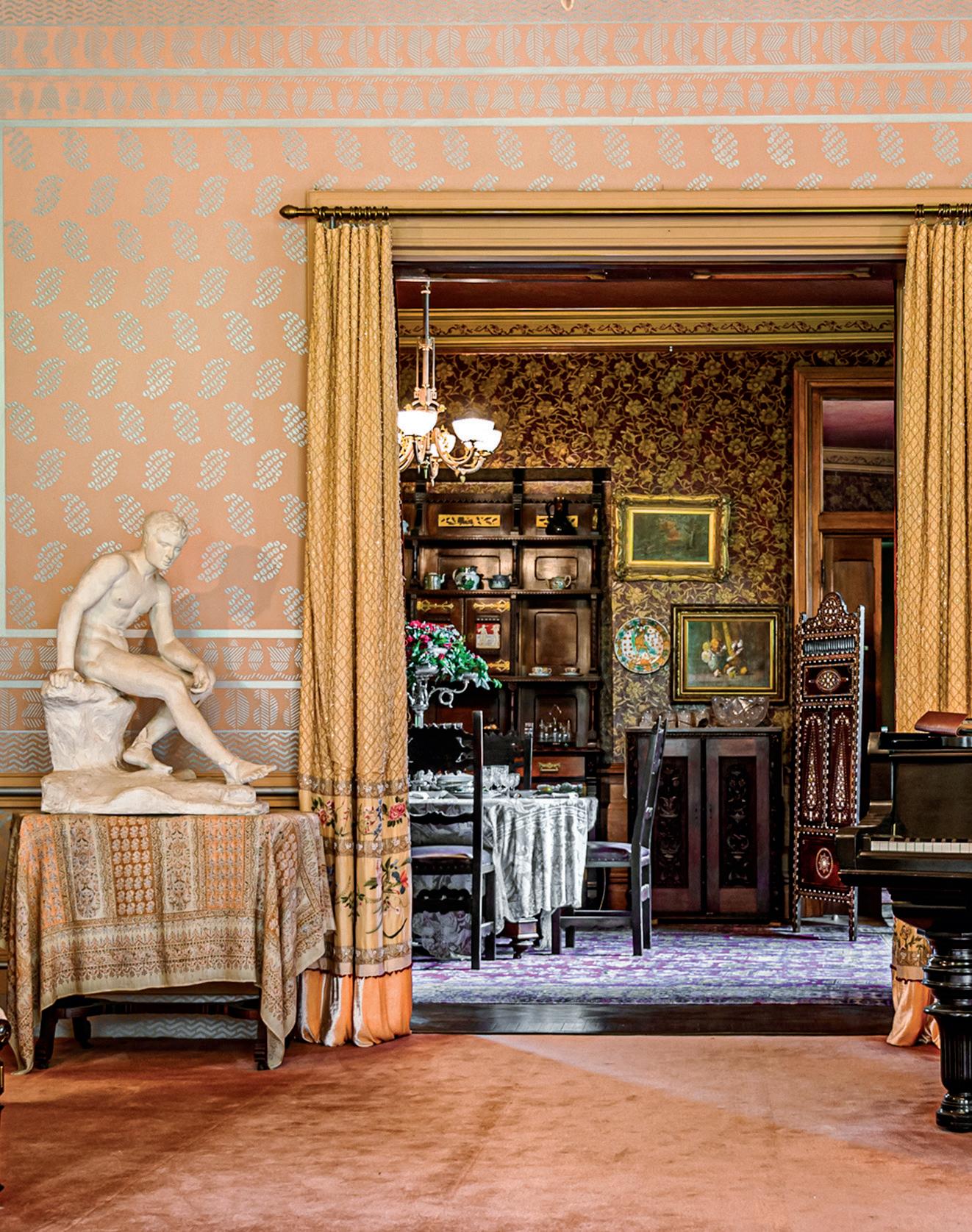
Lifestyle
84 | From Silicon Valley to the Homestead
A Vietnamese American trades the boardroom for the farm—and discovers a slower, healthier lifestyle that has healed her family.
94 | An Enduring Love
Relationship advice for those finding love later in life, from the author of “The Five Love Languages,” Gary Chapman.
96 | From the Earth
The founder of botanical skincare brand Botnia reveals the best plant-based ingredients for skincare that naturally heals.
98 | Wholesome Fitness
How to take care of your body from within, according to holistic fitness coach Tysan Lerner.
104 | Right Next Door
Tips for improving neighborly relations, from etiquette instructor Bethany Friske.
106 | A Sweet Escape
Navarre Beach, Florida, is the ideal getaway that’s under the tourist radar.
114 | Parting Thoughts
A Q&A with Dr. Datis Kharrazian on strengthening immunity.
5 MARCH – APRIL 2024 AMERICAN ESSENCE |
84
70
American Essence
Dana Cheng
EDITORIAL
Editor-In-Chief
Managing Editor
Lifestyle Editor
History Editor
Arts & Letters Editors
Editor-At-Large Production Manager
Channaly Philipp
Annie Wu
Crystal Shi
Sharon Kilarski
Sharon Kilarski
Jennifer Schneider
Tynan Beatty
Astrid Wang
CREATIVE
Lead Designer
Photo Editor & Designer Designer
Photographers
Illustrator
Marie H.
Tatsiana Moon
Sunny Lo
Samira Bouaou
Adhiraj Chakrabarti
Biba Kayewich
MARKETING & SALES
Marketing Manager
Marketing Assistant
Sales Director
Sales Assistant
Brett Chudá
Jennifer Tseng
Ellen Wang
Onon Otgonbayar
CONTRIBUTORS
Sandy Lindsey, Tim Johnson, Kenneth LaFave, Dustin Bass, Neil Cotiaux, Hazel Atkins, Bob Kirchman, Rebecca Day, Brian D’Ambrosio, Rachel Pfeiffer, Andrew Benson Brown, Jeff Minick, Michelle Plastrik, Anna Barren, Stephanie Schaedel, Amy Denney, Conan Milner, Annie Holmquist, Randy Tatano
American Essence (USPS 24810) is published bimonthly by Bright Magazine Group at 5 Penn Plz. Fl.8, New York, NY 10001. Periodicals postage is paid at New York, NY.
Postmaster: Send address changes to American Essence, 5 Penn Plz. Fl.8, New York, NY 10001.
General Inquiries: AmericanEssence.net/help
Advertisement Inquiries: ad@americanessence.com
Submissions: editor@americanessencemag.com
www.AmericanEssence.com

6 | AMERICAN ESSENCE MARCH – APRIL 2024
FOR EVERYONE WHO LOVES THIS COUNTRY PUBLISHER
MARCH – APRIL 2024 | VOLUME 4 | ISSUE 2
Editor’s Note
Dear Readers,

In this issue, we had the pleasure of speaking with country music singer RaeLynn (page 14). She considers herself a wife and mother first, but she is also a storyteller through and through. Authenticity and honesty run through her songs, and it’s no wonder that they’ve resonated so well with audiences.
Also, go behind the scenes of fast food chain In-NOut Burger with president Lynsi Snyder and learn how the principles that underpinned the business from the very start—including putting customers front and center—built a successful company and lasting legacy (page 26)
Don’t miss our interview with legendary football coach Lou Holtz about his three rules for life; as wisdom earned from experience, they are as practical as they are inspiring (page 32). And read about Travis Mills, a military veteran and quadruple amputee, who offers invaluable advice on how to power through hardships (page 22)

Crafted With
Passion Expertise
Indulge in the finest at DAYES Coffee Roasters.
We’re proud to introduce our specialty, enzyme fermented coffee. This innovative coffee is low in caffeine, low in acidity, gentle on digestion, mycotoxin free, and deliciously smooth - with notes of dark chocolate, butterscotch, brown sugar, and nuttiness. Fermented with 50 enzymes, each premium quality bean is specially crafted and roasted at our own coffee shop in Middletown, New York.




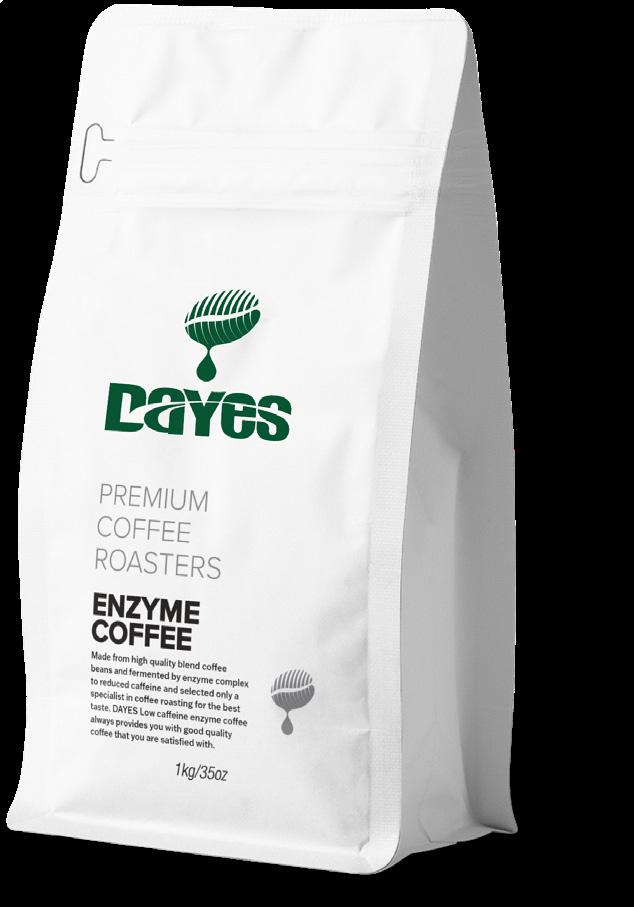
Editor-In-Chief Editor@AmericanEssence.net
Freshly roasted in Middletown, New York - delivered to your home Available whole bean or ground. Order Online: DayesCoffee.com or by Phone: 315-904-2768 Visit us at our coffee shop and roastery 28 North St, Middletown, NY
A healthier choice for your morning brew!
SOCIAL CALENDAR
By Sandy Lindsey
LA JOLLA CONCOURS D’ELEGANCE
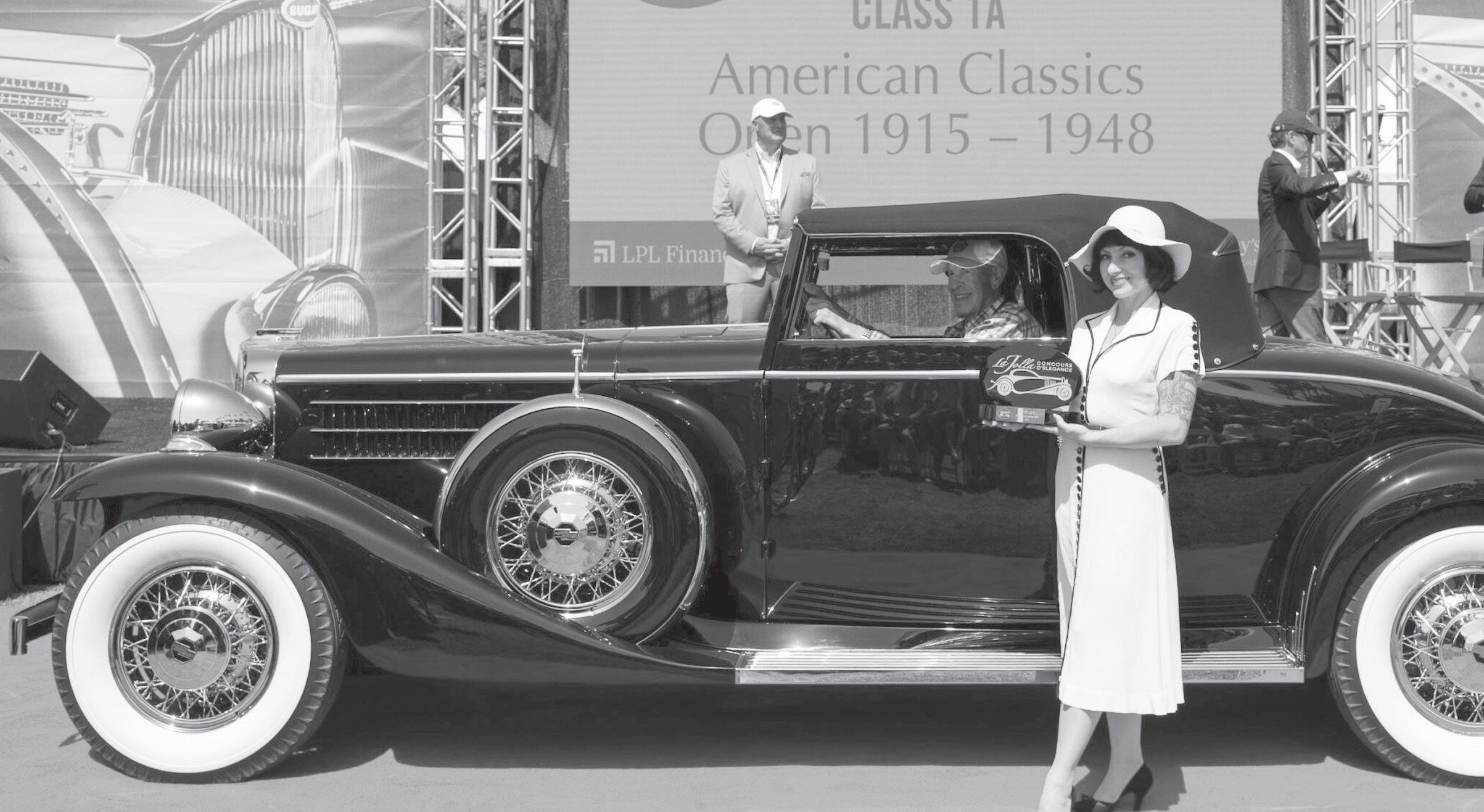

Chilly Creations WORLD ICE ART CHAMPIONSHIPS
Fairbanks, Alaska
Now through March 31
(started on Feb. 17)
Artists carefully select their ice blocks, which can weigh up to 4,000 pounds and are harvested from frozen rivers and lakes to create breathtaking sculptures reaching up to 20 feet tall.
The icy artistry becomes even more breathtaking when it is illuminated at night. IceAlaska.com
Berry Good Time KNOTT’S BOYSENBERRY FESTIVAL
Buena Park, Calif.
March 8–April 28
Enjoy boysenberry-themed food and drinks, along with specialty desserts, specialty wines, craft beers, live music, stage shows, and more as Knott’s Farm celebrates
the unique blackberry, red raspberry, and loganberry hybrid developed in the 1920s. Knotts.com/Events/ Boysenberry-Festival
All-American History PATRIOTS’ DAY IN LEXINGTON
Lexington, Mass.
April 17
Relive the moments that kicked off the American Revolutionary War in an immersive reenactment. Watch as Paul Revere and other patriots sound the alarm, and Colonial militiamen assemble to meet the Red Coat army and battle for independence. LexingtonMinuteMen.com
Automotive Excellence
★ LA JOLLA CONCOURS D’ELEGANCE
La Jolla, Calif.
April 19–21
Set against the dramatic
backdrop of the Pacific Ocean, the finest collector cars from the roaring ’20s, glamorous ’30s, and more compete to be named Best of Show. Don’t miss Saturday’s free “Porsches on Prospect.” LaJollaConcours.com
Botanical Splendor NANTUCKET
DAFFODIL FESTIVAL Nantucket, Mass.
April 25–28
Celebrate spring in a flowerfilled wonderland with the Daffy Hat Pageant, Antique Car Parade on Main Street, Siasconset Tailgate Picnic, Daffy Dog Parade, and the 47th Annual Daffodil Show. Beachthemed family events include the Children’s Beach Bike Parade. DaffodilFestival.com
Tropical Revs
MIAMI GRAND PRIX
Miami, Fla.
May 3–5
The Miami leg of the Formula
1 race is an exciting edgeof-your-seat experience, featuring an average speed of 138 mph on a 19-turn track. Feeling peckish? Choose from 65 of Miami’s best eateries across the Race Campus. Plus, there’s a wealth of activities and other race-related fun. Formula1.com
Pounding Hooves THE 150TH
KENTUCKY DERBY
Louisville, Ky. May 4
Called “the fastest two minutes in sports,” the Kentucky Derby is actually a week full of fun events with a lavish Dawn at the Down preview to watch the favorites warm up; Taste of Derby, a night of delicious cuisine; and the Fillies & Lilies gala at the Derby Museum. There’s also the celebrity-filled Barnstable Gala at socialite Patricia Barnstable-Brown’s hilltop Louisville mansion, historic Champion’s Day events, and much more. KentuckyDerby.com
8 | AMERICAN ESSENCE MARCH – APRIL 2024
★

CULTURE SHORTLIST

‘STAR POWER:
Photographs from Hollywood’s Golden Age by George Hurrell’
The National Portrait Gallery’s exhibition features George Hurrell’s portraits of Hollywood stars during the golden era of filmmaking: the 1930s and 1940s. Hurrell, who worked for Metro-Goldwyn-Mayer and Warner Bros., as well as in his own studio on Sunset Boulevard,
‘THE LOST CITY’
Inspired by his parents’ experiences, Cuban American director Andy Garcia also stars as nightclub impresario Fico Fellove, who struggles to keep his business and family together under Batista’s corrupt regime. However, they will not survive Castro’s reign of terror. As communist oppression increases, Fellove must choose love or freedom.
brought a signature style to his work through posing his subjects artistically, sculpting them dramatically with light and then through the retouching of the photos. Hurrell not only helped define the images of such luminaries as Joan Crawford and Clark Gable, pictured here, but he also helped shape the public’s perception of glamour.
The exhibition runs until January 5, 2025. For information, visit NPG.si.edu
‘GEORGE WASHINGTON’S SECRET
SIX: The Spy Ring That Saved the American Revolution’ That the patriots “outspied” the British is the thesis of a book co-authored by Brian Kilmeade and Don Yaeger. The secret and symbiotic relationship between leading soldiers, such as Maj. Benjamin Tallmadge, and ordinary citizens, like blacksmith and farmer Caleb Brewster, resulted in dangerous plots thwarted and strides made behind the scenes of the American War of Independence.
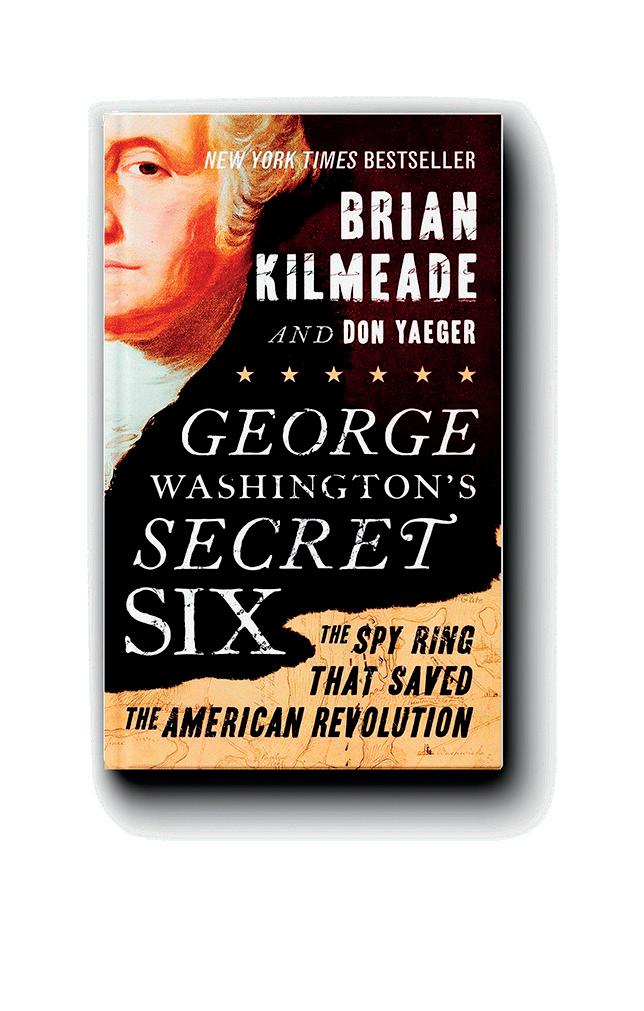
DIRECTORS
Andy Garcia
STARS
Andy Garcia, Bill Murray, Inés Sastre, Dustin Hoffman
RELEASED 2006
STREAMING
Prime, Peacock, Tubi, Pluto
Penguin Random House, 2013 Hardcover, 256 pages
This page is not in the preview.

‘THE LAST OUTLAWS:
The Desperate Final Days of the Dalton Gang’
The Western outlaw was part of American culture since the Civil War, and the Dalton Gang was the most notorious and last of the Old West outlaw gangs. Tom Clavin’s history puts the gang’s thrilling story into context, showing how the end of the horse-riding Western outlaw paralleled the closing of the American Frontier in the 1890s.
St. Martin’s Press, 2023 Hardcover, 288 pages

10 | AMERICAN ESSENCE MARCH – APRIL 2024




Unmoved by Loc Duong InspiredOriginal.Org/Store
available at
Original artworks, canvas wraps and prints of Award-winning oil paintings now
not included preview.
“I’ve always been an open book about my love for this country. Right now, it’s especially important not to be timid about how you feel.”
RaeLynn, country singer & songwriter
 RaeLynn at a horse ranch outside Nashville, Tenn.
RaeLynn at a horse ranch outside Nashville, Tenn.


The country star has matured from her teen self competing on ‘The Voice’ to becoming a songwriter who draws honestly from her own experiences
By Kenneth LaFave

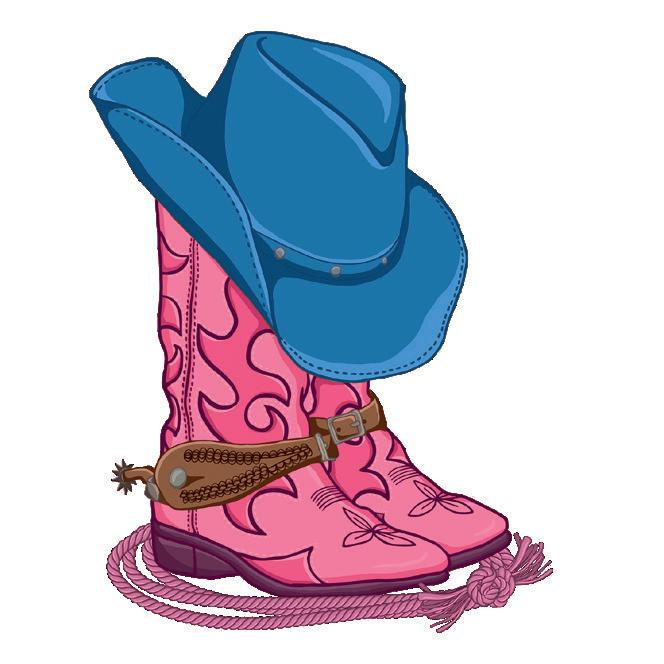
13 MARCH – APRIL 2024 AMERICAN ESSENCE |
RaeLynn frequently tours around the country, whether headlining or singing as a guest performer with other artists.

This page is not in the preview.

“If you have a platform, God didn’t give you that for nothing. It’s important to speak about things that are going on in the world that some people don’t want to speak about.”
RaeLynn
not included preview.

 RaeLynn performs for the 2022 AmericaFest, at the Phoenix Convention Center, Arizona.
RaeLynn performs for the 2022 AmericaFest, at the Phoenix Convention Center, Arizona.
Behind an Iconic Fast Food Chain
Lynsi Snyder, third-generation president of In-N-Out Burger, reveals what it takes to maintain a legacy built on faith, hard work, and the philosophy of treating both employees and customers with respect
By Dustin Bass
Seventy-five years ago, California got its first taste of a drive-thru hamburger. Harry and Esther Snyder opened a modest 10-by-10-foot hamburger stand in Baldwin Park just east of Los Angeles. The sign read: “In-N-Out Hamburgers: No Delay.” Had the original location not stood in the way of the incoming Interstate 10 that stretches across the continental United States, it would still be standing. In 2014, as an homage to the original, the fast food chain constructed an exact replica of the hamburger stand near its original location. Since that first hamburger stand opened on October 22, 1948, at 4:15 pm, In-N-Out Burger has built more than 400 locations, and it has expanded as far north as Oregon and as far east as Texas.
Lynsi Snyder is the granddaughter of Harry and Esther and became president of the major fast food company in 2010. Under her guiding hand, In-N-Out Burger has continued to thrive and expand, not as a corporate conglomerate, but as a family business. As with the reconstruction of
the original location, the third-generation Snyder has vowed to use the company’s history to guide its future.
The core of that history originates from what was known as “Harry’s bible”—a collection of managerial principles concerning how to serve customers and treat employees, ranging from how to properly toast buns to accurately filling out a daily report. “Most of the basics that my grandfather taught his managers are followed to this day,” Ms. Snyder said.
She noted that the priorities of the company are always its customers and employees, and that In-N-Out Burger seeks ways to go beyond what is expected in both customer service and work environment. “Our customers are our number one asset. They are what drive our commitment to quality, friendliness, and cleanliness,” she said. “It’s about giving the customer exactly what they want as long as it doesn’t compromise food safety or throw off our operation. Saying yes whenever possible is part of who we are.”
16 | AMERICAN ESSENCE MARCH – APRIL 2024
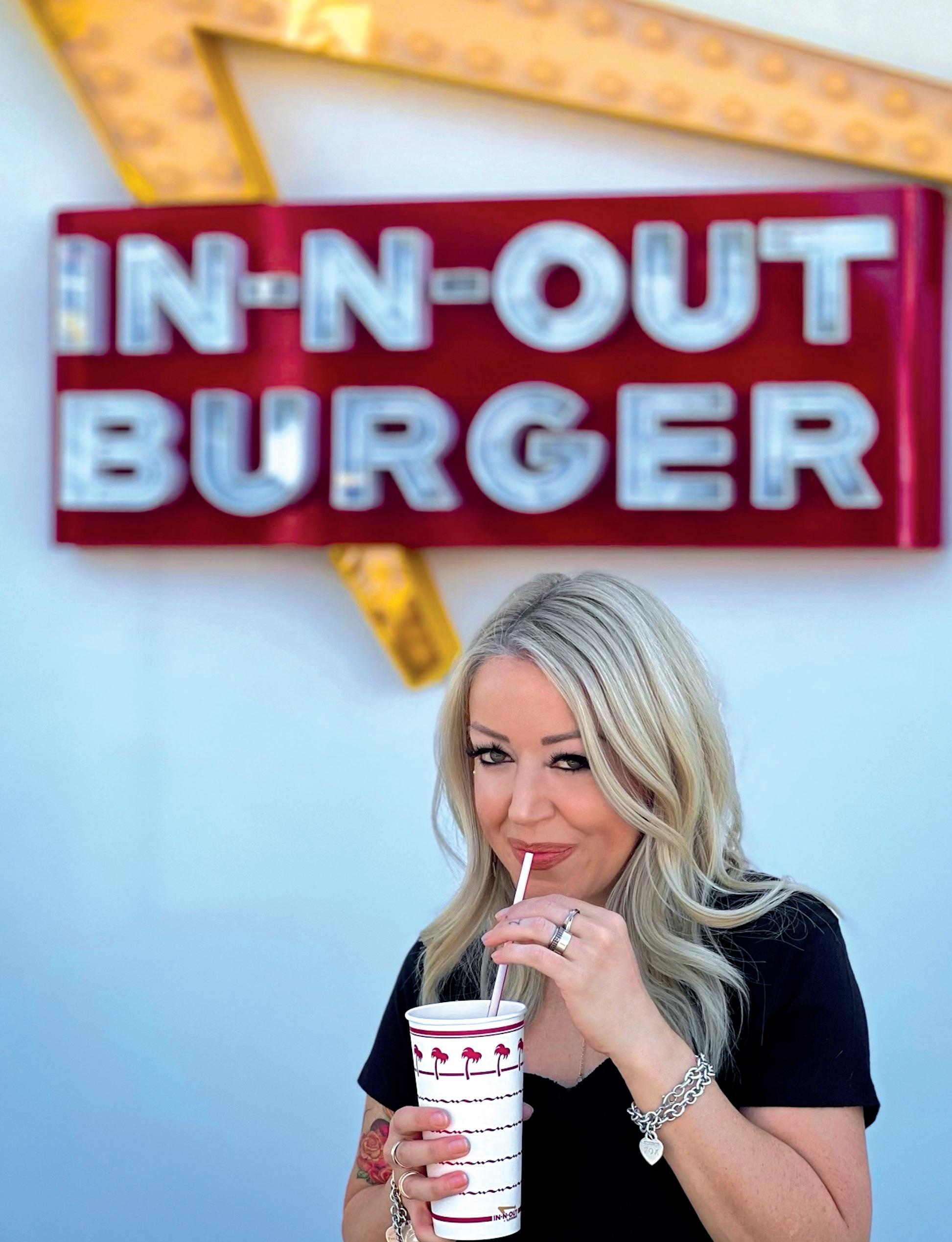 Lynsi Snyder believes the most important aspect of In-N-Out’s business is the family’s strong faith in God.
Lynsi Snyder believes the most important aspect of In-N-Out’s business is the family’s strong faith in God.

This page is not in the preview.
18 | AMERICAN ESSENCE MARCH – APRIL 2024 Outside an In-N-Out in Temple City, Calif.

The average store manager has been with In-N-Out Burger for over 18 years.
not included preview.

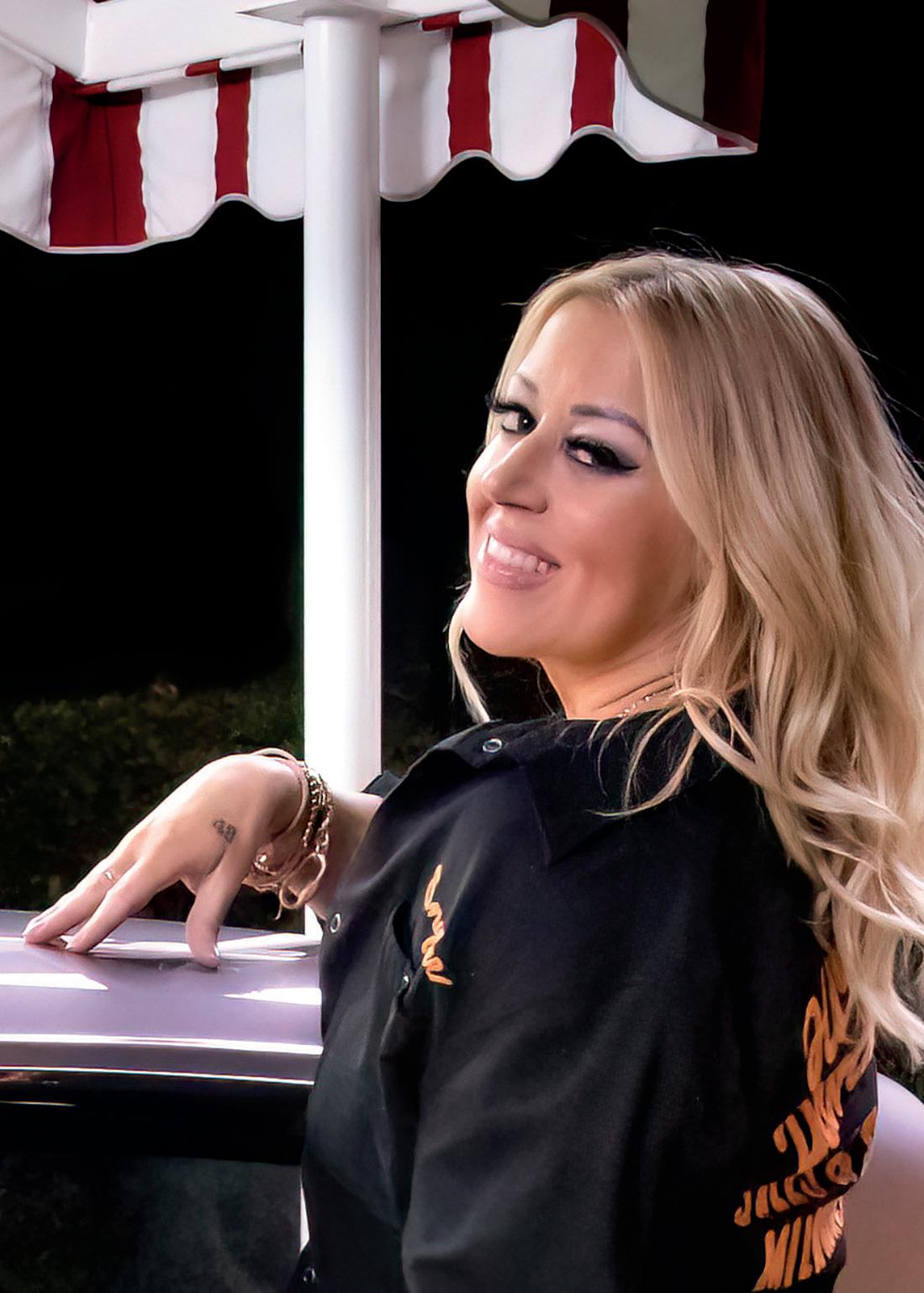

19 MARCH – APRIL 2024 AMERICAN ESSENCE |
LEFT
Young Lynsi with her uncle Rich Snyder.
ABOVE
Ms. Snyder with her grandmother Esther.

“If you believe that you are where you are because of what somebody else did, then you’re going to count on somebody else to get you out of that situation. Well, that ain’t going to happen. You control your future. Nobody else does.”
Lou Holtz, retired college football coach

After retiring from coaching in 2004, Lou Holtz was a sports reporter for ESPN. Here, he attends a game between the Oregon Ducks and the Auburn Tigers at University of Phoenix Stadium in Glendale, Ariz., in January 2011.
Life Lessons From Football
Legendary college football coach Lou Holtz teaches us to live by 3 rules in order to be our very best
By Annie Wu
Lou Holtz’s legendary tenure as football coach concluded with his having led six different football teams to bowl games (tournament games with the top-level National Collegiate Athletic Association football teams)—and he remains the only college football coach to do so in NCAA history. Most notably at Notre Dame, and also at the College of William and Mary, North Carolina State, and other top schools, the College Football Hall of Famer inspired players to give their all on the field. “It’s like they’re your children. They came under your guidance. [You] do everything you can to prepare them to be successful in football and in life,” Mr. Holtz said in an interview with American Essence. He realized that he could teach them to become men of good character by following three main rules. Even if some initially showed resistance, they would eventually listen to Mr. Holtz because he persisted in showing them that he cared about them and believed in them.

21 MARCH – APRIL 2024 AMERICAN ESSENCE |
Mr. Holtz stands with Notre Dame players before a game at Notre Dame Stadium in South Bend, Ind., in September 2008. He has led the Fighting Irish to the 1988 National Championship and 100 wins.
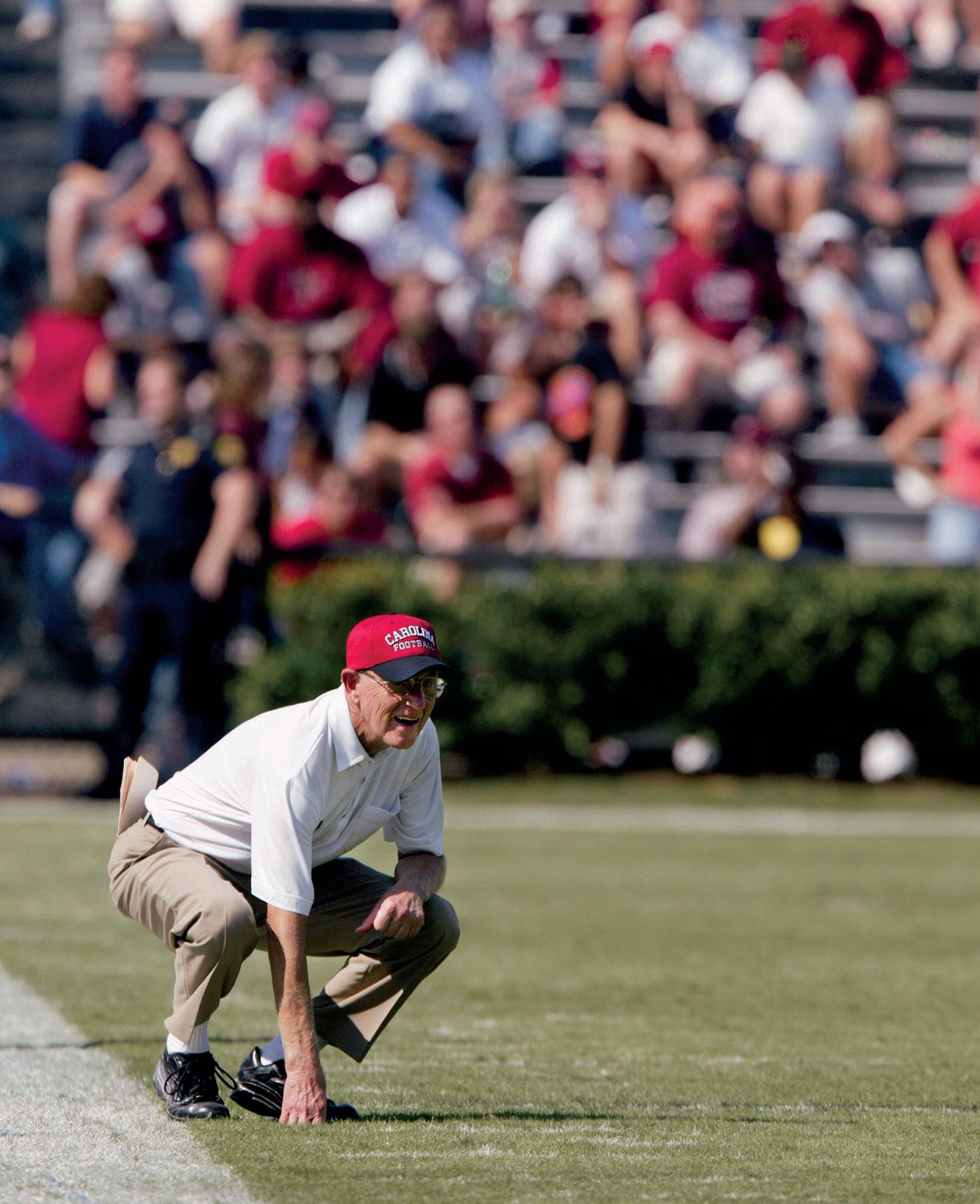

We asked Mr. Holtz how to be our very best selves.
This interview has been edited for clarity and brevity.
American Essence: You wrote about the “Three Rules for Living a Good Life” that you’ve applied to guiding players and in teaching people to succeed through your motivational speaking. How can those rules encourage people to do the best they can?
Lou Holtz: Whatever happens to us in our life, either good or bad, is strictly because of the choices we make. Stop blaming other people for the choices you make. Rule number one is do the right thing. It’s important to do what’s right, not because it’s popular, but because it’s what you believe. Because it’s the only way you can build trust with other people. If you don’t have trust, you can have no relationship. The second rule is do everything to the very best of your ability. You can fool me and you can fool everybody else, but you can’t fool yourself. You and you alone know when you put your head on the pillow whether you did everything to the very best of your ability. And the last rule is, show people you care. I’m an old man. My birthday candles cost more than cake. But the one thing I’ve learned is that life is not about being void of problems. Life is being able to handle problems, because you’re gonna have them.
This page is not in the preview.
Your obligation as a leader or as a parent is not to lower the standards, but to show the young people how they can reach the standard and how good and talented and competent they are.
AE: How do you teach them the consequences of their choices so that they can make better ones in the future?
Mr. Holtz: What’s important is, when you realize that wherever you are, it is because of the choices you make, then all you have to do is change your choices, in order to change your environment. If you believe that you are where you are because of what somebody else did, then you’re going to count on somebody else to get you out of that situation. Well, that ain’t going to happen. You control your future. Nobody else does.
AE: Some people may have difficult days, when they don’t feel like they have what it takes. Or they’re not confident in their abilities. How did you deal with that when you were coaching
22 | AMERICAN ESSENCE MARCH – APRIL 2024
Mr. Holtz looks on from the sidelines while coaching the University of South Carolina Gamecocks, at Williams–Brice Stadium in Columbia, S.C., in October 2002.
Mr. Holtz looks over his playbook during a South Carolina Gamecocks game, September 2004.
young players?
Mr. Holtz: Number one, I believed in them and what they’re capable of. And the problem is, as a coach, I always felt they were much more talented than they themselves thought. And you never criticize a performer. But you have an obligation to criticize a performance. And so with young people today, I wouldn’t let little things go by, but I would make sure they understood that they’re good people, but they’re not doing the best they can and that’s unfair to themselves.
AE: Was there one moment in your coaching career that was especially meaningful for you, that taught you something about how to mentor youth?
not included preview.
Mr. Holtz: I think I constantly learned from people and from players. I never learned anything by talking. I only learned by listening and observing what was going on and what was happening. I’ve taken over six college situations, never inherited a winner. But I went in there with a faith and a belief that we could succeed, that we had talent, if they just had to learn to believe in themselves, and find out what they’re capable of doing. And understand the obligation you have to the person next to you. You may not want to do the best you can. But if you don’t, you’re causing other people to have hardships in life. And that’s not fair. I believe you have an obligation to other people, you have an obligation to your family, you have an obligation to your children, to your wife. If you’re part of a business, you have an obligation to the other employees there. And for you to do anything less than the best you can, you jeopardize their future. And that’s not fair. If you want to fail, you have the right to fail. You do not have the right to cause other people to fail because you don’t do everything to the best of your ability.
AE: You talk about the importance of goal setting and having big dreams. What if people don’t really know how to achieve their goal? What would you suggest to them?
Mr. Holtz: You’re going to have to remain positive. I believe what the mind can perceive, the body can achieve.
Remember the word W.I.N., [which stands for] “what’s important now?” You want to be an A student. Then, you ask yourself, “What’s important now to do that?” Evaluate your past, focus on the future, and it’ll tell you what you have to do in the present. •

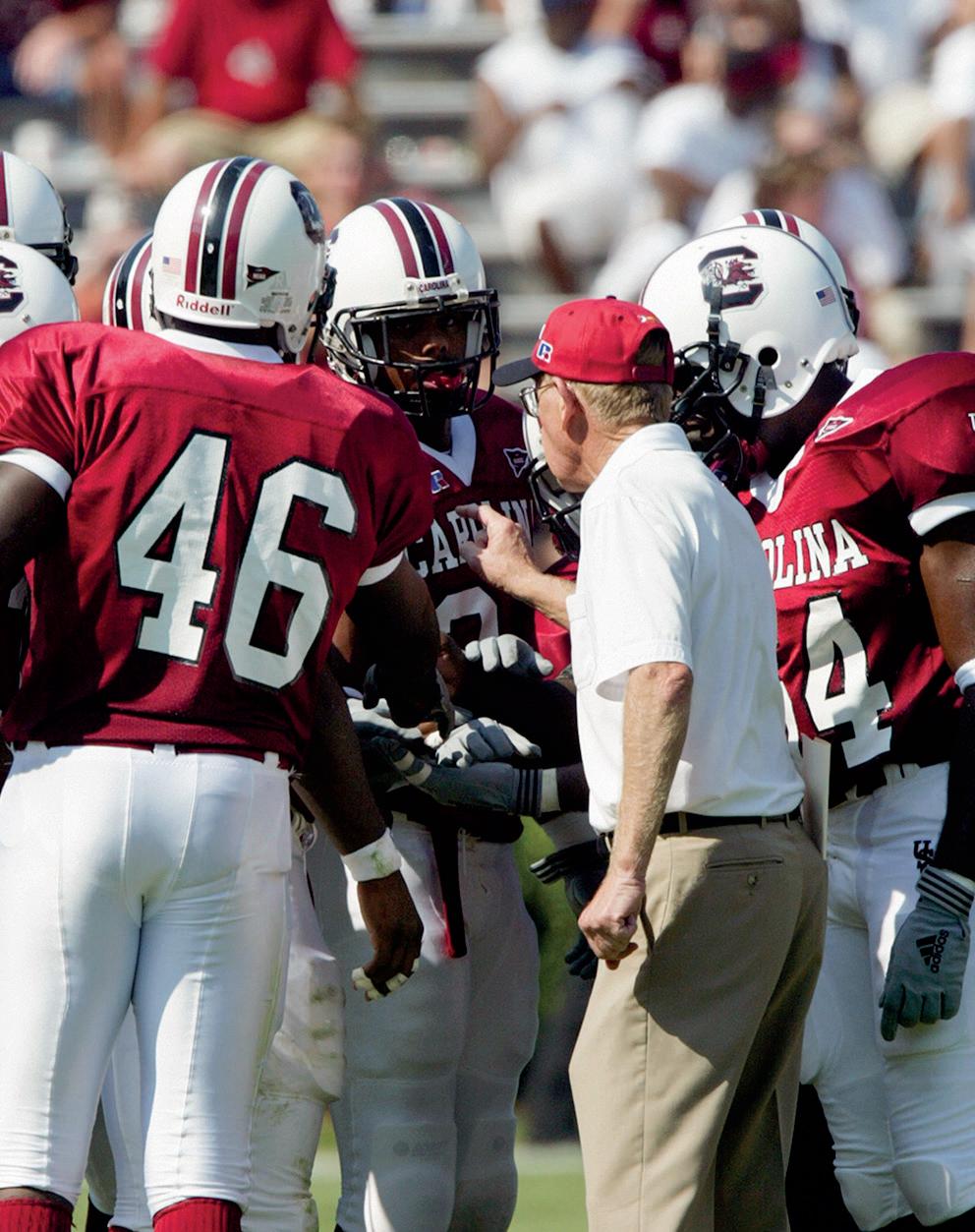
23 MARCH – APRIL 2024 AMERICAN ESSENCE |
Mr. Holtz is the only coach who has guided four different college football teams to final Top 20 rankings.
Mr. Holtz expected his players to perform their best on the field.
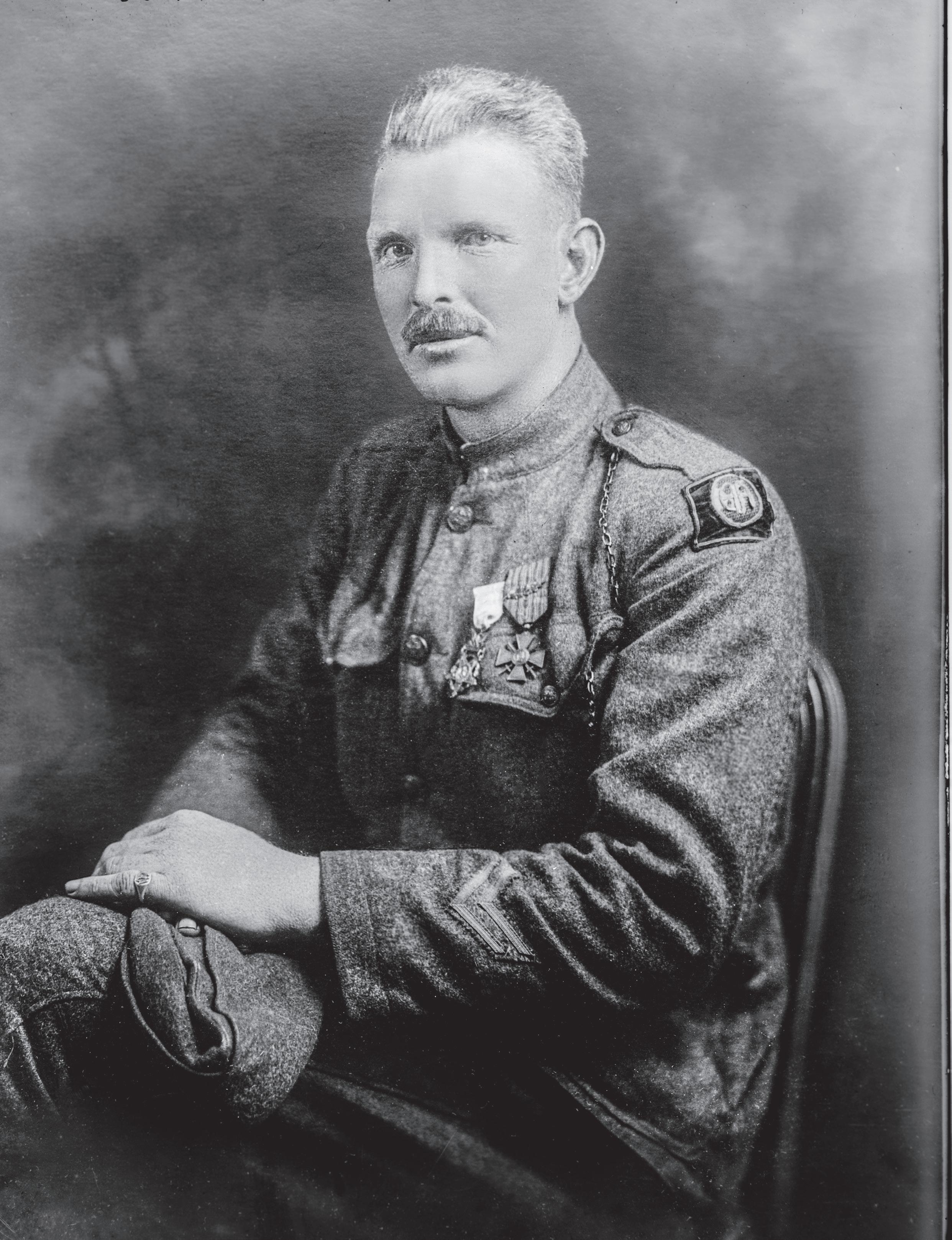 A photograph of Sgt. Alvin C. York, one of the most decorated American soldiers in World War I, between 1915 and 1920.
A photograph of Sgt. Alvin C. York, one of the most decorated American soldiers in World War I, between 1915 and 1920.
A Sergeant’s Selfless Service
Sgt. York, the celebrity war hero, used his fame to improve his beloved state, especially the education of its rural residents
By Bob Kirchman
Outgunned and outnumbered, the Americans of the 82nd Division were being slaughtered. It was October 8, 1918, and German Lt. Paul Vollmer was defending his position in the Argonne Forest of France. They held a slight advantage and the attacking Americans were walking into a death trap. Sgt. Alvin York and just a handful of men from his platoon survived the German defense, taking cover as best they could. The Germans still picked them off from trenches and machine gun nests. Surely, it was just a matter of time until they would all be dead or captured.
In the thick of battle, Alvin York remembered the art of hunting wild game with a long rifle: “I (shot) the sixth man first; then the fifth; then the fourth; then the third; and so on. That’s the way we shoot wild turkeys at home. You see we don’t want the front ones to know that we’re getting the back ones, and then they keep on coming until we get them all.” Shooting a long rifle, you don’t have the luxury of getting off another shot right away. You have to reload. He hated to keep shooting men dead, so he tried to get the Germans to surrender.
Finally, after he had shot 20 German soldiers, he convinced their major to surrender. Alvin and the eight men remaining captured 132 German soldiers that day. That part of York’s story is
accurately portrayed in the 1941 biographical film “Sergeant York,” starring Gary Cooper. It is also detailed in his war diary and in the official account of his commanding officers. York slightly understates it, but the official report tells an amazing, almost unbelievable account of the actual event. German accounts of the MeuseArgonne Offensive concur. Hollywood did not embellish that one bit.
Strategically positioning themselves, York and the handful of survivors made the Germans drop their weapons and marched them behind the

He worked to improve educational opportunities for the children of his native Fentress County and rural Tennessee.
American lines. Still thinking they were outnumbered, the Germans readily complied. Now, York and his men had a problem. No one wanted to take the prisoners off their hands—so they kept on marching! Finally, they were relieved of their prisoners when they came upon an American unit large enough to handle all of them. Later, the captured soldiers were taken to a French prison. York was ordered to report to Brig. Gen. Julian
25 MARCH – APRIL 2024 AMERICAN ESSENCE |

Lindsey, who exclaimed, “Well, York, I hear you have captured the whole damned German army!”
Alvin told him with a straight face that he had only taken 132.
In the Valley of the Wolf River
Finding the Tennessee countryside where this brave soldier lived is an adventure. Driving through the Big South Fork National River and Recreation Area, the road you travel winds through rugged hollows dark with rhododendron. This is mountain country. Davy Crockett and Daniel Boone spent time here in the Cumberland Mountains. York writes that he remembers a beech tree inscribed “D Boon CillED A. Bar in the YEAR 1760.” A wild and rough country, it called for men and women to match it.
York was a wild and rough man, the third of 11 children, who grew up in a one-room cabin. He
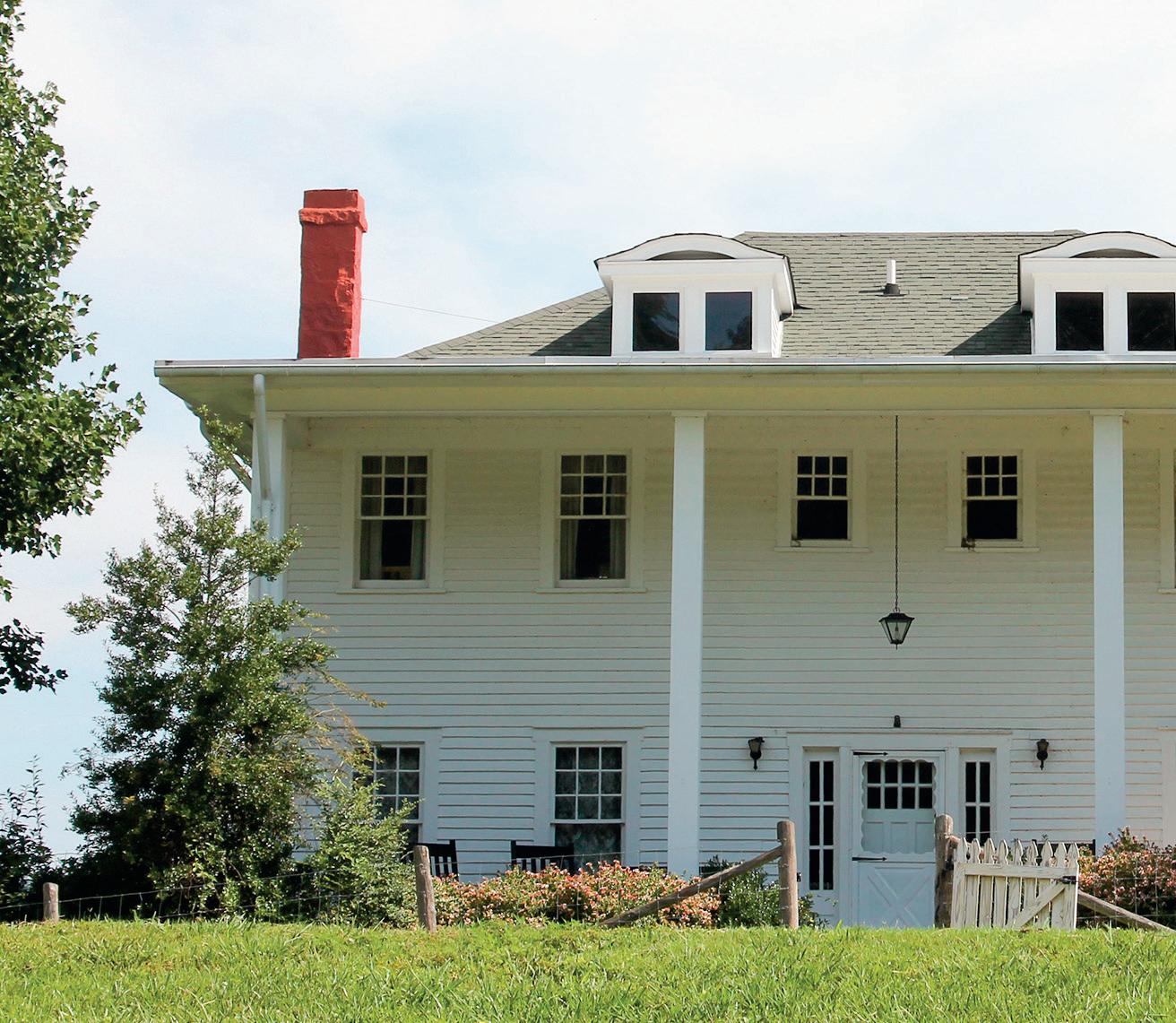
was a hard-drinking, hardworking fellow. Then, he had his conversion experience.
He wasn’t struck by lightning riding his mule, as the movie portrays, but his coming to faith was every bit as powerful, evident in his changed life. He became a lay leader and Sunday school teacher, quite intent on mentoring the youth.
York’s daughter Betsy Ross York-Lowery didn’t know about her father’s heroism until she watched Gary Cooper portray him. “Daddy never talked about the war or what he did. We didn’t know all that until we saw the movie.”
This page is not in the preview.
York was reluctant to have a movie made about his life, but he authorized the portrayal by Cooper when he saw that it could help to finance a Bible school. That movie was supposed to be about his whole life, especially his passion for educating young people. However, since it was made as America entered World War II, the screenplay naturally revolved around his heroic military service.
The film ends with York returning home and walking across a bridge with his beloved Gracie, to their new home in Pall Mall, Tennessee, where the two had grown up in the valley of the Wolf River. Mrs. York states, as the movie ends, that the beautiful home and farm are his, given to him by the people of Tennessee.
One might think that the state government funded the homestead, but, in truth, it was the Nashville Rotary Club that raised the money initially to buy the 400-acre bottomland farm that had been his dream. No government monies
26 | AMERICAN ESSENCE MARCH – APRIL 2024
ABOVE Sgt. York is photographed reading a letter back home in the “Valley of the Three Forks o’ the Wolf,” Fentress County, Tenn.
ABOVE RIGHT
Sgt. York’s house in Pall Mall, Tenn.



not included preview.
were involved. Fellow Tennessean Davy Crockett would have approved of this, for it is reported that he didn’t think the government should be providing money or special favors to people. The Yorks lived in his mother’s small cabin when they were first married.
York’s Legacy York continued to work for the good of his community. Recognizing that his own education was limited, he worked to improve educational opportunities for the children of his native

York’s daughter Betsy Ross York-Lowery didn’t know about her father’s heroism until she watched Gary Cooper portray him.
Fentress County and rural Tennessee. He founded the Alvin C. York Agricultural Institute, a private agricultural school, in 1926. He gave the deed to the state of Tennessee in 1937, and it continues to operate today as a comprehensive secondary school in Jamestown, Tennessee. Its mission statement states, “The vision of the Alvin C. York Institute is to serve as a model rural school of excellence where all stakeholders prepare and excel for the challenges and opportunities of the future.”
The York Historic Site says, “Everybody was always welcome at the York House. York never
met a stranger, and he treated everyone the same no matter who they were.” Like President Thomas Jefferson, after whom York named a son, he was always entertaining visitors. Mrs. York and the girls—the Yorks had 10 children, of whom eight survived to adulthood—would prepare meals for them, and they might stay overnight in the upstairs bedrooms. (All of the children slept in the upstairs bedrooms, while their parents slept in an alcove off of the living room.) Sometimes, they prepared meals for as many as 50 people. The large dining room, where they would often dine together with guests, still contains the Yorks’ actual furniture and decor.
In 1948, York suffered the first in a series of debilitating strokes, and in 1954 he was confined to bed. His special bed, on a rotat ing frame, occupies his side of the sleeping alcove today. Mrs. York’s bed sits on the other side. On it is lain the dress she wore to her husband’s funeral in 1964. She continued to live on their beloved homestead until her death 20 years later.
Today, the house is lovingly maintained by the state of Tennessee, along with the grist mill that York eventually acquired and ran. History seekers can still wander through the house and savor its story. In it a great man lived out his later years in quiet service to the country and community he loved. “People have not forgotten Daddy. They still come to see him and the place he loved so much,” Mrs. York-Lowery said. •
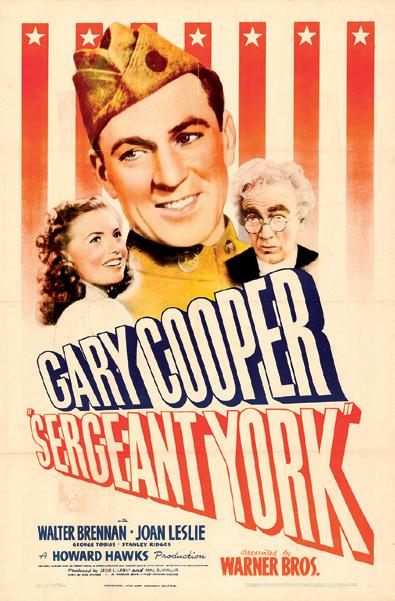
27 MARCH – APRIL 2024 AMERICAN ESSENCE |
Theatrical release poster for the 1941 film “Sergeant York” featuring Gary Cooper as Alvin York.
ABOVE LEFT York arrives at Penn Station, New York, to attend the premiere of Howard Hawks’s film “Sergeant York” in 1941.
ABOVE Pioneer film producer Jesse L. Lasky with York (R), researching for the film “Sergeant York,” circa 1940.
 The inventor of basketball, James Naismith, stands in a field carrying a ball and a peach basket, circa early 1900s.
The inventor of basketball, James Naismith, stands in a field carrying a ball and a peach basket, circa early 1900s.
The Humble Origins of Basketball
What began as a recreational activity to teach life lessons, quickly became a beloved sport
By Brian D’Ambrosio
When a young physical education teacher invented a new game in December 1891, he was looking for more than exercise. To James Naismith, basketball had loftier goals than that.
In 1891, while working at the Young Men’s Christian Association (YMCA) Training School, later Springfield College, Naismith was given the assignment of developing a game that could be played indoors between the football and baseball seasons. The environment of the late 1800s was receptive to a new sport. Cities were overflowing with new immigrants who were getting their first taste of democracy. Health and sanitation conditions were deplorable; education was minimal. And from Naismith’s perspective, the need for a Christian witness to all these people was evident. Perhaps, he could reach this wide range of people with a new game. As a committed Christian, he wanted to invent a game that would provide a means for him and others to lead other young men to a personal relationship with God.
Pain Marked Life of Inventor
To understand basketball is to understand the life of its inventor. James Naismith was 9 years old when he was told that both of his parents were dying of typhoid fever. He was raised by his Uncle Peter, who was stern and demanding. Death always seemed near. His brother, Robbie, died at 18 from appendicitis. While he lay dying, Robbie
implored Jim to kill him to ease the pain. “You wouldn’t see a rabbit suffer like this,” he screamed at Jim the night he died. Years later, while Naismith was instructing a gym class, one of his students flipped carelessly, landed on his head, and died. And his wife, Maude, who also became gravely ill with typhoid yet survived, became deaf because of her ordeal. To James Naismith, these events were things that happened within God’s providence. He saw his personal experiences as part of life in a fallen world.
This philosophy of life compelled him to choose a life’s work that would help reduce the seemingly ever-present evil in the world and to prepare for the coming Kingdom of God. With that goal in mind in his career, James Naismith set out to meet the needs of the world in which he lived.
Theology Meets Physical Education
James Naismith was born in Ramsay Township, Ontario, in 1861. Because Naismith had dropped out of school for five years, he did not graduate from high school until he was 22 years old. Yet that late date for pursuing his degree held advantages for him. He was more directed in his career goals, was a better student, and was much more mature and purposeful about studying than many of his classmates. While some pursued college study with little internal direction, Naismith was focused. He was intent on becoming a minister.

29 MARCH – APRIL 2024 AMERICAN ESSENCE |
A model of Mr. Naismith’s original basketball hoop.
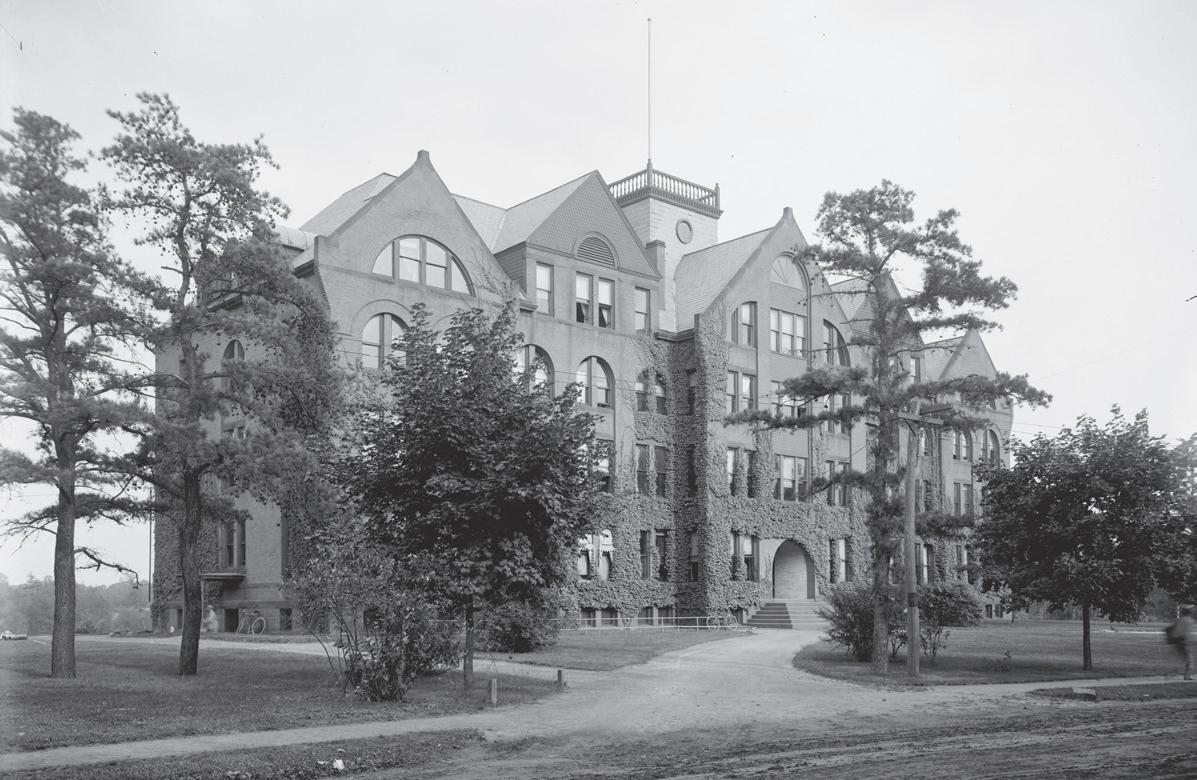
ABOVE
As a college student in his mid-20s, he turned down the recruiting of several athletics teams. To James Naismith, academics came first. Later, after making sure his schoolwork was in order, he participated on the rugby, fencing, and gymnastics teams. After finishing his undergraduate work, he became a graduate student at Presbyterian College, in 1887. While studying theology, he served the fledgling Montreal YMCA and McGill University as a physical education instructor. But

In 1891, Naismith was given the assignment of developing a game that could be played indoors between the football and baseball seasons.
Naismith never finished his seminary training. In 1890, he joined Luther Gulick and Amos Alonzo Stagg at the YMCA Training School in Springfield, Massachusetts. In Springfield, Naismith found a niche as a Christian who wanted to use sports as a focus for ministry.
And one way he did that was by inventing basketball.
Creation of a Game
In an attempt to create a new sport, Naismith first used elements of childhood games he played on the farm. However, none of the games and activities he tried attracted the interest of students. After their initial experimenting, both Gulick and Naismith concluded that something special was needed.
After many trials, Naismith finally stumbled onto a simple game of 13 rules. While most of

the rules reflected regulations that were used in other games, such as movement of the ball, determination of fouls, and out-of-bounds, Naismith came up with the one essential ingredient that would make the game distinct from all others: the concept of tossing a ball at an elevated goal on a soft arc. The new ingredient, derived from an old childhood game called duck-on-a-rock (children would attempt to knock a softball-sized rock off a boulder from 10 to 15 feet), provided a basis for flexible offensive maneuvers that would allow the new sport to adapt to changes over the next century. Soon to be called “basket ball” because Naismith used two peach baskets as goals, the game became an immediate hit with the men at the YMCA.
This page is not in the preview.
Day of Invention
It was December 21, 1891, when Naismith rushed into his office and grabbed a soccer ball. Now he needed a goal. He asked Pop Stebbins, the building superintendent, for a couple of square boxes. He didn’t have them, but he had something else— two old peach baskets. Naismith tacked the rules to the gym bulletin board and promised the class that if this new game failed, he would not try any more experiments. Captains chose teams of nine members, and Naismith selected two center men. He tossed the ball up between them, and they jumped for it to start the new game. Because the men had never played before, Naismith called many fouls for holding, pushing, and tripping. After two fouls, the player had to sit on the sideline until the next goal occurred. When the game ended, everyone wanted to play some more.
In 1892, a group of women teachers from a nearby school asked Naismith if they could play,
30 | AMERICAN ESSENCE MARCH – APRIL 2024
The Young Men’s Christian Association (YMCA) Training School in Springfield, Mass., where Naismith worked as a physical education instructor in the late 19th century.
ABOVE RIGHT
A photograph of the exterior of Naismith Memorial Basketball Hall of Fame in Springfield, Mass.
too. “I don’t see why not,” he said. In one game, Naismith, as referee, was shocked when he called a foul and one of the women protested forcefully. But he remembered that game clearly. One of the women, Maude Sherman, later became his wife.
Beyond the Game
For Naismith, the invention of basketball was more than an attempt to develop a new game. It was also a means to educate people about moral and Christian values. He wanted to develop an activity that would not only be recreational and appeal to the play instincts but would also educate the athletes in certain values. Naismith felt that all play and game activity was part of a larger classroom. And he was convinced that placing an individual in a game environment would give him an educational experience. Basketball, Naismith felt, would be a self-instructional activity.
not included preview.
As basketball developed in the 20th century, however, it changed from what Naismith had in mind. It became less a self-directed activity and more a coach-directed game. In response to these trends, Naismith became rigid. He rejected most attempts to change the rules of play to adapt to the demands of a changing athletic culture. Naismith felt that the game as he invented it would develop each player on its own and needed no human intervention. The game itself would nurture the athlete.
By 1936, basketball was so popular around the world that it became an Olympic sport. Naismith, who attended the opening ceremonies, was allowed to hand out medals to the winning teams.
Enshrined Forever in Sports
As the inventor of basketball, Naismith made a contribution to American sport that is truly unique. Basketball is the only major sport strictly invented in America. Football, baseball, and hockey seem to have evolved from earlier games over a long period of time. It would appear that Naismith’s creation reflected not only society as it was in 1891, but also the needs of James Naismith, the orphan and the Christian with a mission, as he interacted with society.
Although Naismith gained a medical degree several years after inventing basketball and went on to teach at the University of Kansas for 40 years, it is through his one creative act, the invention of basketball, that Naismith will be enshrined forever in the life of sport. He died November 28, 1939, in Lawrence, Kansas. •
A hand-stitched basketball made from eight leather panels, early 1900s.

Basketball Trivia
them get into the NBA.
Americans over age 6 play basketball at least once per year.
30 Points
27 Million+ per game was Michael Jordan’s average score.
210,000+
Dunks
1 Game Lost
have been performed by NBA players since 1996. by the Golden State Warriors in the 2016–2017 season— the best playoff record and the closest an NBA team has gotten to being undefeated.
31 MARCH – APRIL 2024 AMERICAN ESSENCE |

Mark Twain’s Gothic Revival house— from the exterior painted bricks, exuberant gables, and tiled roof to the elaborate interior decorations— made a definitive statement about his burgeoning literary career at the time.
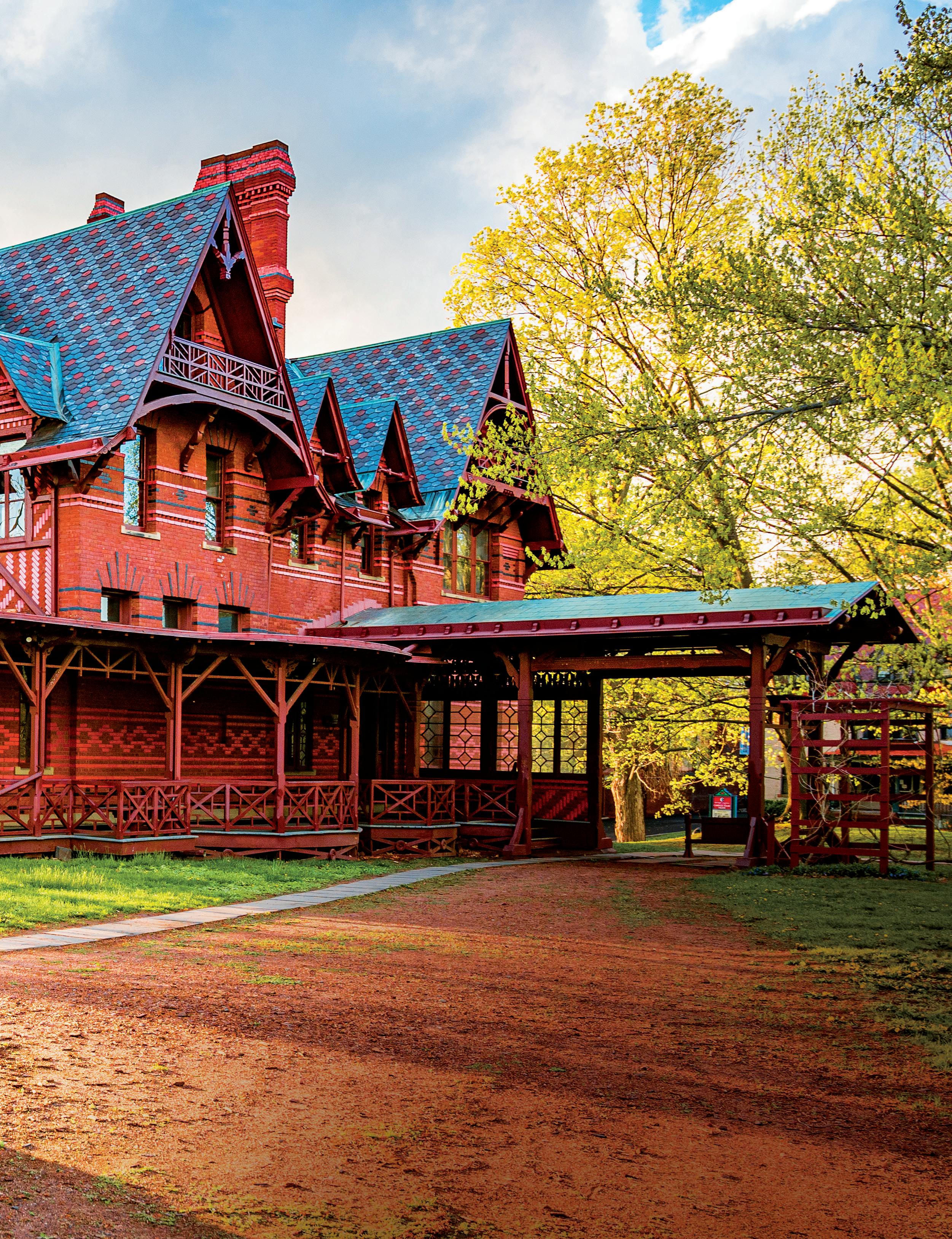
Mark Twain’s Dream Abode
The whimsy, elegance, and extravagance of the famed writer’s house in Hartford, Conn., matches his eclectic and layered personality
By Michelle Plastrik

Decorated by Louis C.
The Mark Twain House & Museum resides befittingly in Hartford, Connecticut, in the charming, historic neighborhood of Nook Farm, once a thriving artistic community. The lovingly preserved home of America’s humorist was built in an American Gothic Revival style in 1874 and was lived in by Twain and his family until 1891. The mansion was intended to make a statement about its owner and his burgeoning literary career. Its whimsy, elegance, and extravagance—from exterior painted bricks, exuberant gables, and tiled roof, to the elaborate interior decorations—made a definitive statement in the 19th century. Indeed, the Gilded Age look of Twain’s home, with its layered, maximalist design of furnishings, textiles, and patterns, is once again in vogue.
Mark Twain, born Samuel Clemens (1835–1910), was a man of many talents and many jobs. In his life, he worked as a riverboat pilot, silver prospector, newspaper reporter, adventurer, satirist, lecturer, and author of iconic American books. His years spent in this Hartford home were the happiest and most productive of his life, and he called it “the loveliest home that ever was.”
This page is not in the preview.
While living here, he wrote his classic novels “The Adventures of Huckleberry Finn,” “The Adventures of Tom Sawyer,” “The Prince and the Pauper,” and “A Connecticut in Yankee in King Arthur’s Court.”
Twain and his wife Olivia commissioned the New York architect Edward Tuckerman Potter, a specialist in ecclesiastical design and High Victorian Gothic style, to build their dream home. Twain was then primarily known for his travel writings and a novel that lampooned high society, yet the 25-room house announced intentionally his entrée into that very society. Measuring 11,500 square feet distributed over three floors, it epitomized a modern home of the time, with central heating, gas lighting fixtures, and hot and cold running water. As the building costs were substantial, with the couple spending between $40,000 and $45,000 on the construction, the interiors were initially kept simple.
The house was used for delightful dinner parties, billiard games, charity events, and the raising of three daughters. In 1881, Twain’s growing international fame and success enabled the couple to renovate the home’s interiors in
34 | AMERICAN ESSENCE MARCH – APRIL 2024
Tiffany & Co., Associated Artists, the house has an entrance hall that is kept dim to mimic gas lighting. The iridescent stenciling, accented by wooden moldings, gives the room the feeling of a Persian palace.
not included preview.
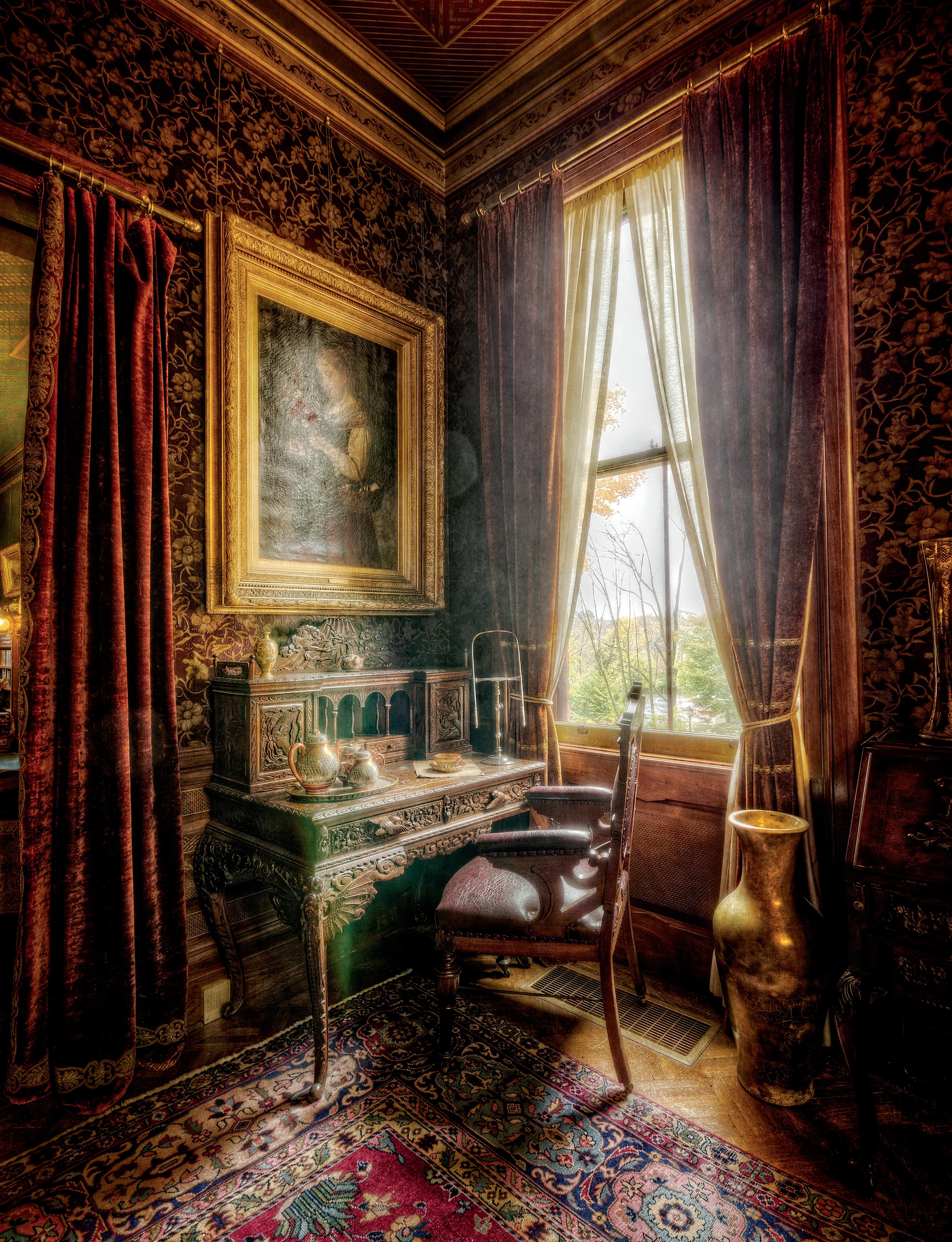
The dining room wallpaper features heavily embossed paper, simulating the texture and color of tooled leather.

Mending Wall
By Robert Frost
Something there is that doesn’t love a wall, That sends the frozen-ground-swell under it, And spills the upper boulders in the sun; And makes gaps even two can pass abreast.
The work of hunters is another thing:
I have come after them and made repair
Where they have left not one stone on a stone, But they would have the rabbit out of hiding,
To please the yelping dogs. The gaps I mean, No one has seen them made or heard them made, But at spring mending-time we find them there.
I let my neighbor know beyond the hill; And on a day we meet to walk the line
And set the wall between us once again. We keep the wall between us as we go.
To each the boulders that have fallen to each.
And some are loaves and some so nearly balls
We have to use a spell to make them balance:
‘Stay where you are until our backs are turned!’ We wear our fingers rough with handling them.
Oh, just another kind of out-door game,
One on a side. It comes to little more:
There where it is we do not need the wall:
He is all pine and I am apple orchard. My apple trees will never get across
And eat the cones under his pines, I tell him.
He only says, ‘Good fences make good neighbors.’
Spring is the mischief in me, and I wonder
If I could put a notion in his head:
‘Why do they make good neighbors? Isn’t it
Where there are cows? But here there are no cows.
Before I built a wall I’d ask to know
What I was walling in or walling out,
And to whom I was like to give offense.
Something there is that doesn't love a wall, That wants it down.’ I could say ‘Elves’ to him, But it’s not elves exactly, and I’d rather He said it for himself. I see him there
Bringing a stone grasped firmly by the top
In each hand, like an old-stone savage armed. He moves in darkness as it seems to me, Not of woods only and the shade of trees. He will not go behind his father’s saying,
And he likes having thought of it so well
He says again, ‘Good fences make good neighbors.’
36 | AMERICAN ESSENCE MARCH – APRIL 2024
‘ Mending Wall,’ 2023 Illustrated By Biba Kayewich
LIFESTYLE
★ Returning to the Roots
THE BEST OF AMERICAN LIVING A Restful Retreat
A former tech exec brings her cultural heritage to the American homesteading tradition.
84

In Tune With Your Body
Finding balance while getting fit.
98
Plan a getaway to a little-known beach town in Florida.
106
A young cow on Sophia Nguyen Eng’s permaculture farm in Tennessee.
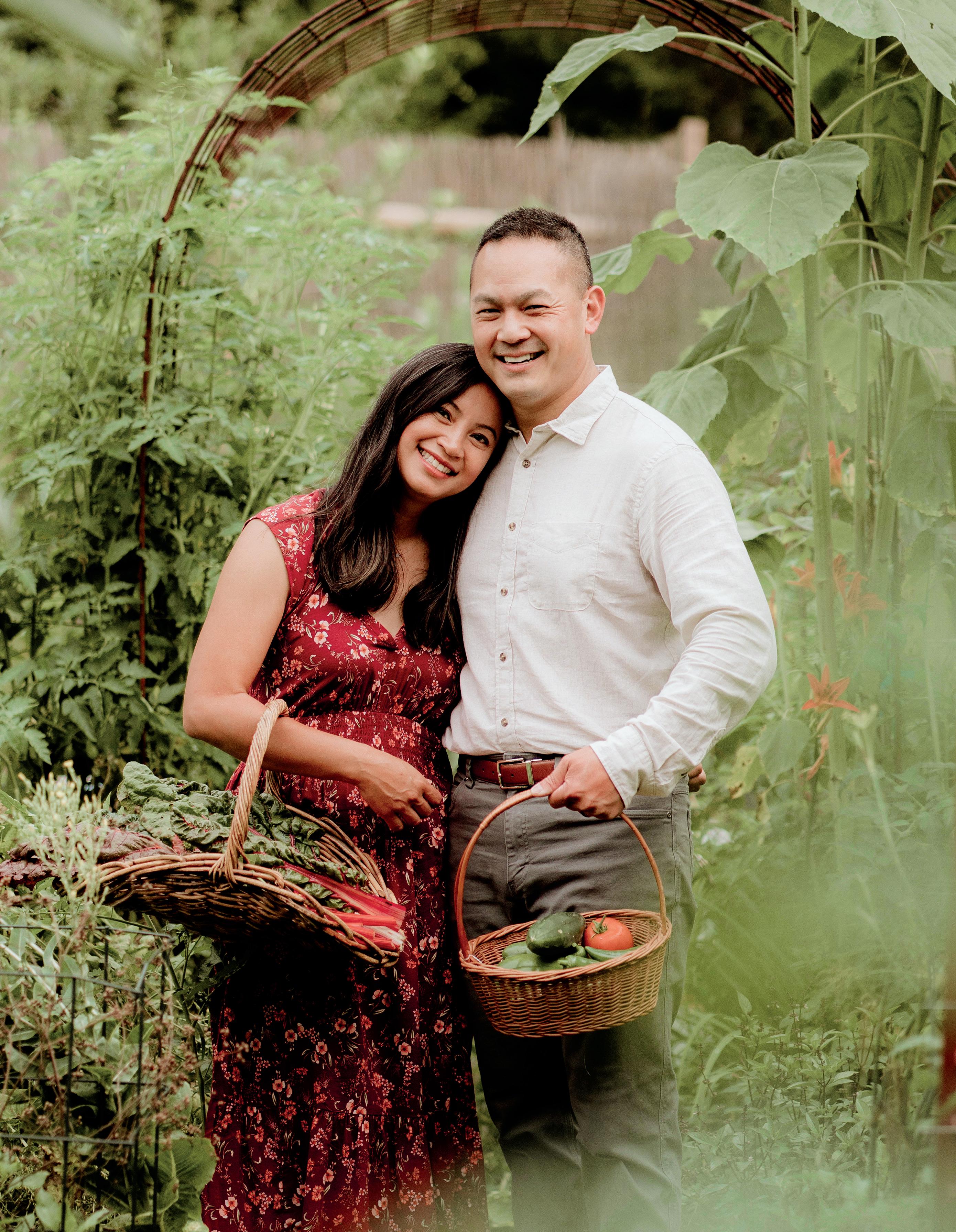 Vietnamese American homesteader Sophia Nguyen Eng with her husband, Tim, at their farm in eastern Tennessee.
Vietnamese American homesteader Sophia Nguyen Eng with her husband, Tim, at their farm in eastern Tennessee.
Nourishing the Land, Nourishing the Soul
A first-generation Vietnamese American draws on regenerative farming practices and the food traditions of her culture to champion a healthier lifestyle that’s in tune with nature
By Amy Denney
Born and raised in Silicon Valley, Sophia Nguyen Eng was poised for success in the technology world.
She was good at what she did— growth marketing campaigns for startups and Fortune 500 companies—and was well on her way up the corporate ladder. She founded an organization, Women in Growth, to support other women working in the tech space. Hers was a resume that would make any aspiring professional envious.
Then the birth of her oldest daughter, Emily, in 2011 inspired her to reach new heights—not in tech, but in the kitchen. It’s the beginning of this unusual and fascinating tale of how an ambitious American family traded the boardroom for a farm.
Reaching for Ancient Wisdom
Ms. Eng’s journey began at the grocery store, where the selection of baby foods looked gray and unappetizing. A first-generation Vietnamese American who wasn’t accustomed to cooking fruit, she decided to research how to make her own applesauce for Emily.
A line in a cookbook gave her pause. Organic is best for babies, it said, because their bodies cannot tolerate or process pesticides and herbicides.
“At what point can her body process it?” Ms. Eng
mused. “Or are we doing it wrong, and should we be changing the way we think about food?”
It was then that she remembered the yellow book on nutrition gifted to her by a fellow military family when her husband, Tim, was an officer in the U.S. Army. The family lived on a homestead, had a dairy cow, made their own medicinal tinctures, and homeschooled their eight children. They often shared wisdom with the couple.

A 1930s study found a strong correlation between traditional diets and better dental and overall health.
“She was telling me, ‘You’ve got to try this grassfed raw milk,’” Ms. Eng recalled, laughing at the memory. “I thought, ‘Oh no. This is how I’m going to die.’”
But the responsibility of raising a child, and her own intuition, were driving her to seek out the truth about food. Suddenly, she felt that knowing the habits of this odd but healthy and happy family was vital to her own. The new mother was older and wiser, and she knew that different didn’t equate with detriment. Not to mention her
39 MARCH – APRIL 2024 AMERICAN ESSENCE |
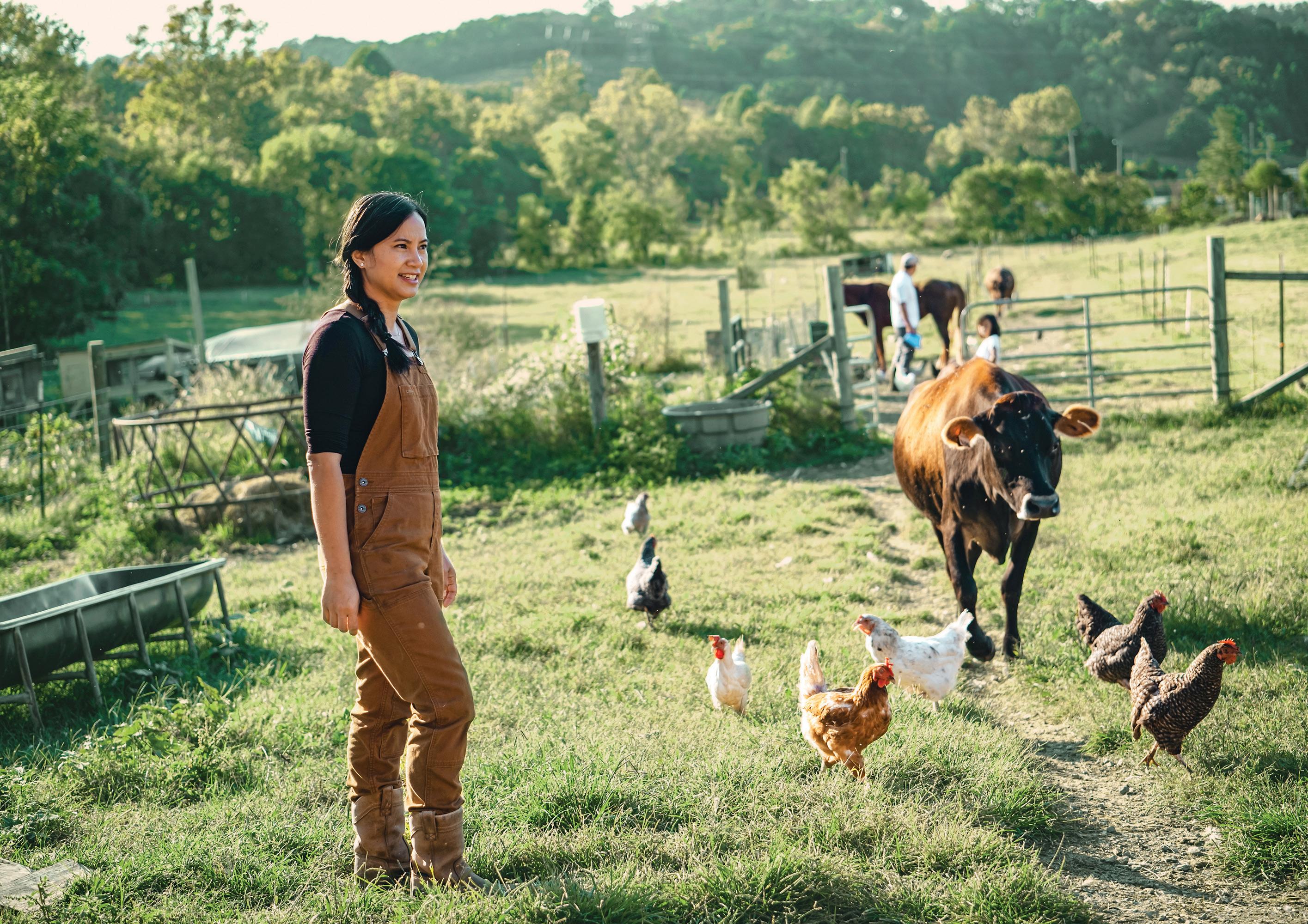
firsthand experience: Growing up, she was teased for the homemade—and sometimes pungent— ethnic food in her brown bag lunches, while peers devoured processed food from brightly colored packages. Back then, she was envious of the vending machine snacks in their lunch boxes.
Ms. Eng dusted off the book: “Nourishing Traditions: The Cookbook That Challenges Politically Correct Nutrition and Diet Dictocrats.”
Written in 1995 by Sally Fallon Morell, the cookbook is based on Weston A. Price’s 11 dietary principles that emphasize eating real, unprocessed traditional foods. Price, a Canadian dentist, traveled the world in the 1930s, studying isolated indigenous cultures that had not yet been industrialized. He found a strong correlation between their traditional diets and better dental and overall health. The common characteristics from his findings, known as the Wise Traditions principles, include no refined ingredients; choosing traditional animal fats over industrialized seed oils; enjoying lacto-fermented condiments and beverages; and balancing nutrient-dense foods from both land and sea animals, including organ meats, eggs, raw dairy, and fish.
This page is not in the preview.
Like others before her, Ms. Eng was captivated by his work. The book gelled with her experiences with healing that came on the heels of dietary changes. In one instance, her husband’s fiercely itchy eczema disappeared when they changed their meat source from supermarket beef to grassfed and grass-finished beef from a local farm.
It also resonated with her heritage: the rich Vietnamese flavors and traditions that influenced her parents’ wholesome, nutrient-dense cooking and sparked her own lifelong interest in nutrition. She recalled something that her grandfather, who spoke rarely, told her as a child: “Eat to live. Do not live to eat.” So began a journey following a trail of breadcrumbs that would lead her back to her roots.
Filling the Gap
Though Ms. Eng instantly gravitated toward the Wise Traditions principles, she encountered a roadblock: They had no specific guidance for Asian diets. Price had never visited an Asian country, as they didn’t fit his criteria; at the time, they were largely already influenced by industrialization.
“It was a dilemma for us because we were trying
40 | AMERICAN ESSENCE MARCH – APRIL 2024
Ms. Eng goes by the philosophy of returning back to the earth what comes from the ground.
to honor our cultural traditions, while embracing a nourishing diet with what felt like a missing gap,” Ms. Eng said. Her husband is a second-generation Chinese American. “I wanted to try to see if I could apply Weston A. Price principles to Asian cuisine. It felt like a natural fit because many traditional Asian culinary practices aligned with emphasis on real, unprocessed ingredients and mindful preparation.”
The family decided to start with common ground and figure out the rest. Some principles were easier to adopt: cooking most vegetables; liberal use of gelatinous bone broths; proper preparation of grains, nuts, and seeds to enhance digestion; and special nutrient-dense foods before conception, during pregnancy, and for growing babies.

Ms. Eng and her mother worked their family recipes to be more nourishing and nutrient-dense.
not included preview.
Others were more challenging, such as adding raw dairy, not traditionally part of Asian diets, and getting rid of refined foods, which had become part of their kitchen as a modern, busy Asian American family. On one occasion, Ms. Eng impulsively purged the refrigerator of all the conveniently packaged marinades and condiments they’d used.
Initially shocked, Ms. Eng’s mother quickly got on board. Together, they reworked their family recipes to be more nourishing and nutrient-dense, combining traditional Asian cooking practices with what they’d newly learned.
To make nuoc cham, a classic Vietnamese dipping sauce, for instance, Ms. Eng swaps the typical refined sugar with honey or maple syrup. To replace the sugar in bun bo Hue, a spicy noodle soup, she uses jujube fruits. And instead of cooking with canola or vegetable oil, as many Asian recipes call for, she opts for lard, tallow, or duck fat.
Some projects were more involved. Making the perfect homemade fish sauce, an Asian pantry staple, meant a year of fermenting anchovies with pineapple and salt—totally worth it, Ms. Eng insisted. The process flies in the face of fast-food culture, but it summons a deeper appreciation for food. (The family goes through a lot of fish sauce, though, so they supplement with store-bought bottles from the Red Boat brand, free of added sugar or preservatives.)
“Recipe by recipe, we’ve recreated everything so it tastes traditionally Asian,” Ms. Eng said. “It took us a couple years, but we got to a point where Mom and Dad could eat it with their discerning palates.”
A Farm of Their Own
The Engs also grow many of their ingredients, a practice that began in their quarter-acre suburban neighborhood lot in Pleasant Hill that they transformed into a garden. The family came to realize that while good food intersects with good health, both rely on good agriculture. Ms. Eng knew that growing food demands healthy soil, made so by returning everything that comes out of the ground back into the earth.
That was a breadcrumb dropped along her path by Joel Salatin of Polyface Farm, the self-proclaimed “lunatic farmer,” whom Ms. Eng first met at a Google event. The Engs took classes from him and others to learn how to honor regenerative farming practices—even with their small yard.
Then the unthinkable happened. The pandemic hit, and food insecurity suddenly became a real threat. Ms. Eng’s parents had always warned their children of this possibility. They had fled Saigon in 1975, the day before it fell in the Vietnam War, before settling in California.
The Engs mobilized quickly and overpaid for three egg-laying hens—more than $300 each—to ensure they could have sustainable protein. The vulnerability of that decision inspired them to put themselves in a better position for self-reliance. In 2021, they moved—taking their chickens with them—to a homestead north of Sacramento. They expanded their garden and added livestock, starting with goats and sheep.
Then they traveled the country to fast-track their learning about homestead living. By 2022, they’d left California altogether and bought five acres


Ms. Eng makes lots of pickled vegetables according to her family recipes.

Nutrient-dense, homemade broths are commonly used in Asian dishes.
Ms. Eng as a young toddler with her mom, in 1984.
41 MARCH – APRIL 2024 AMERICAN ESSENCE |

VIETNAMESE CHICKEN SALAD (GOI GA BAP CAI)
This chicken salad is second to none in my opinion! It is a popular dish in Vietnam and also in our home, because it allows me to stretch a poached or grilled chicken with a variety of fresh and pickled vegetables, herbs, and a sweet and tangy dressing. I make it with three types of cabbage because they add a delectable crunch and texture to the salad, but you can use just green cabbage.
SERVES 4 TO 6
FOR THE DRESSING
6 tablespoons lemon juice cup fish sauce
2 tablespoons rice vinegar
2 tablespoons maple syrup
1 teaspoon ground black pepper
FOR THE CHICKEN SALAD
3 cups shredded cooked pastureraised chicken
2 cups finely shredded green cabbage
2 cups thinly sliced napa cabbage
2 cups thinly sliced savoy cabbage
1 carrot, peeled and shredded
3 radishes, thinly sliced cup bean sprouts
Ms. Eng’s whole family, with her mom and dad, husband, and two daughters.
red onion, thinly sliced cup chopped fresh cilantro
cup chopped fresh mint
cup chopped peanuts
3 scallions, sliced
1 Fresno chile, thinly sliced (optional)
cup crispy fried shallots (optional)
Ginger Fish Sauce (recipe follows)
➤To make the dressing, in a small bowl, whisk together the lemon juice, fish sauce, vinegar, maple syrup, and pepper. Set aside.
➤ In a large bowl, combine the chicken, cabbage, carrot, radishes, bean sprouts, and red onion. Pour some of the dressing over the chicken and vegetables and toss to combine. Add the cilantro and mint and toss again. Sprinkle the chopped peanuts, scallions, Fresno chile, and fried shallots (if using) on top of the salad.
➤ Serve immediately, with the remaining dressing on the side for drizzling on each bite and the ginger fish sauce for dipping. Alternatively, you can cover and refrigerate the salad for up to 3 days and serve it chilled.
GINGER FISH SAUCE
MAKES ABOUT 1 CUP
cup fish sauce
cup spring water, warmed
2 tablespoons lime juice
2 tablespoons maple syrup or raw honey
1 (2-inch) piece fresh ginger (about 2 ounces), peeled and finely chopped
2 garlic cloves, finely chopped 1 or 2 Thai chiles, sliced (optional)
➤ In a small bowl, combine the fish sauce, water, lime juice, and maple syrup. Mix until the sweetener dissolves. Add the ginger, garlic, and chiles and stir to combine.
➤ Let the sauce sit for 10 minutes before serving. Store in an airtight container in the refrigerator for up to 2 weeks.
Recipes adapted from “The Nourishing Asian Kitchen: NutrientDense Recipes for Health & Healing” by Sophia Nguyen Eng. Used with permission from Chelsea Green Publishing. Available in print and e-book wherever books are sold.

43 MARCH – APRIL 2024 AMERICAN ESSENCE |
The Beauty of Mature Love
Gary Chapman, author of
‘The
5
Love Languages,’
on how to navigate the unique challenges and joys of finding love in the latter stages of life
By Hazel Atkins

GARY CHAPMAN, MARRIAGE
COUNSELOR, associate pastor, and author of the best-selling book “The Five Love Languages,” loves to hear stories of people finding their other half in their later years. In Mr. Chapman’s experience, the euphoria of falling in love can happen at any stage of adult life, and some of the most touching stories he’s heard are of couples who are 60 and older finding love. “They all have the same basic excited feelings of falling in love that happen to people in their 20s,” Mr. Chapman said.

Still, there are considerations and challenges unique to this stage of life, and the earlier those are aired and discussed, Mr. Chapman says, the smoother the road ahead will be. He shared his advice.
Identify and Negotiate Boundaries
Older people are naturally less adaptable than younger people, so it’s important to have open discussions about established lifestyle patterns and habits. Is one person a morning person, and the other a night owl?
“Or, if she always goes to her women’s group on Wednesday nights and wants to continue to do that, but he wants her to do something of particular importance to him on those nights, how will they negotiate that?”
Mr. Chapman said. “When you get married, things will change. You’ll have problems having a sense of unity if you ignore those things.”


This page is not in the preview.
Agree On a Plan for Finances
“People feel strongly about money,” said Mr. Chapman. Each person will bring assets and individual patterns of spending and borrowing to a relationship, and each couple will need to discuss whether to join those assets or keep them separate, and how to handle expenses such as taking a trip together. “There are lots of ways people can handle these questions, but they will save themselves a lot of pain if they have some agreement,” Mr. Chapman advised.
Financial issues become compounded when there are adult children. Mr. Chapman recommends couples marrying later in life to give their children time to discuss and work through the change together.
44 | AMERICAN ESSENCE MARCH – APRIL 2024

Don’t EmotionalIgnoreBaggage
Knowing each other’s past journeys will help a newly formed couple prepare for a future together. “How many times has this person been divorced? That’s a good clue!” Mr. Chapman joked.
A person’s story may involve trauma of some kind. “It is never a good idea to ignore that trauma, because it always influences us in the future,” Mr. Chapman said. He thus advises new couples not to shirk premarital counseling. “It’s tempting to think, ‘I’ve been married before, I know what it’s like.’ But you’ve never been married to this person before.”
Learn to Speak Each Other’s Love Languages
not included preview.
The five love languages, according to Mr. Chapman, are five categories that people understand as expressions of love: quality time, acts of service, gifts, words of affirmation, and physical touch. Your primary love language—that is, the language you most easily understand—“tends to stay with you throughout life,” said Mr. Chapman. For couples of any age, Mr. Chapman recommends discovering each other’s love language and speaking it regularly. For older couples, the five languages can help them navigate the sometimes churning waters of late adult life.


In Mr. Chapman’s experience, the euphoria of falling in love can happen at any stage of adult life, and some of the most touching stories he’s heard are of those who found each other later in life.
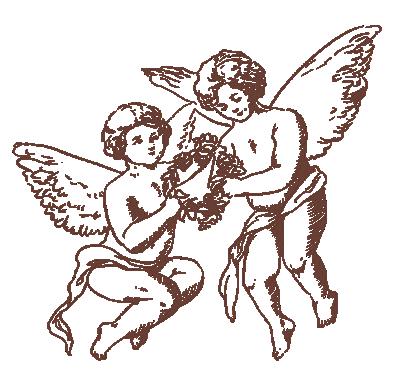
Rekindle Love at Any Age
“Marriages are either growing or regressing. They’re never standing still,” Mr. Chapman said.
An important practice in a healthy relationship is acknowledging and apologizing for failures. Mr. Chapman used the analogy of a roadblock to explain what happens if we don’t: “If we don’t apologize, every time we hurt our spouse it creates an emotional block and it sits there.”
A simple way to tend love’s flame is to “check in with them every two or three weeks and ask, ‘What can I do to be a better husband or wife?’” Mr. Chapman said. “Love is an attitude: I want to enrich your life.”
Be Open and Realistic About Health Concerns
“We don’t usually think about disability when we’re just getting married,” Mr. Chapman said, but it’s a harsh reality for relationships that begin later in life. If marriage is understood as a covenant, in sickness and in health, he says, then older couples need to be realistic about the amount of time they may have together, both existing health problems and ones that may develop, and how they will rise to meet such situations, including with the support of family. •
45 MARCH – APRIL 2024 AMERICAN ESSENCE |
Florida’s Hidden Gem
Navarre Beach, in the Panhandle, is a quiet beach community that offers true tranquility and opportunities for outdoor adventure
By Randy Tatano
 A sailboat regatta in Navarre Beach. The town is ideal for “snowbirds” looking to escape cold weather.
A sailboat regatta in Navarre Beach. The town is ideal for “snowbirds” looking to escape cold weather.

It’s known as Florida’s most relaxing place—where the Gulf of Mexico touches the sugar-white sands and turquoise waters of the Sunshine State’s gulf coast. It’s almost a trip back in time to the days when a vacation wasn’t filled with the stress of travel and dealing with crowds.
Navarre Beach, part of Santa Rosa County, Florida, isn’t a tourist trap and doesn’t intend to become one. If your dream vacation includes a long stretch of beach all to yourself, this is the place. Located between Pensacola and Destin on Florida’s Emerald Coast (named because of the water color), it’s a unique destination, offering a beach community without the usual overcrowding that often accompanies vacation destinations. Mom-and-pop restaurants offer unique dining and a break from the chains. And during the offseason, it’s about as quiet a beach as you can find in the state. It’s a family destination, with no rowdy bars that attract wild spring breakers.
Natural Wonders in Santa Rosa County
One of the absolute jewels in this county is the Gulf Islands National Seashore, 7 miles of federally protected beachfront property connecting Navarre Beach to Pensacola Beach on the Florida panhandle. Parking lots are scattered alongside the road, so pull over and take a walk. During the winter, you might find yourself the only person on this pristine beach. It’s also a bird sanctuary, and during nesting season, the speed limit decreases to 25 mph to keep our flying friends safe. But you’ll want to drive slowly anyway to enjoy the spectacular, unspoiled scenery and crystal clear waters, taking in the Gulf breeze as it blows between the sea oats.
Fishing from shore takes on a whole new meaning, as the Navarre Beach Fishing Pier stretches nearly a third of a mile into the Gulf of Mexico and is the longest fishing pier in the Gulf. Even if you’re not an angler, it’s a relaxing walk, an opportunity to breathe in the salt air. You can also fish from the beach, and don’t be surprised if
47 MARCH – APRIL 2024 AMERICAN ESSENCE |

a heron flies up to you, waiting for the too-small catch you intended to throw back.
Take a short walk from the pier and get a unique look at nature at the Navarre Beach Sea Turtle Conservation Center. It features interactive exhibits and displays to educate visitors about sea turtles, their life cycle, and the challenges they face in the wild. Even more nature is just up the road about a half hour, as the Gulf Breeze Zoo offers a variety of animals on its 30-acre African preserve.
A Warm Out-of-State Welcome
Snowbirds escaping the cold will find more than warm weather, as Santa Rosa County offers numerous programs to keep visitors busy. The abundance of non-Florida license plates seen during the winter indicates that the snowbirds have arrived, just like the robins who head south for the winter.
Assistant Tourist Development Director Monica McBrien is proud of the variety of activities offered during the winter. “The Navarre Beach Snowbird Program has evolved into a cherished tradition for our community, serving as a hub for snowbirds to forge new connections and rekindle old friendships. Every January, we extend a warm welcome to snowbirds in our office, offering an array of engaging experiences such as crafts, parties, lectures from locals, and county-wide activities.”
Programs extend past the traditional Christmas boat parade and New Year’s Eve fireworks. There’s no need to head to New Orleans for Mardi Gras, as visitors can enjoy the grand Mardi Gras Parade on Navarre Beach. This year’s snowbird program offers over 30 classes, ensuring a rich and rewarding experience for all participants. No surprise that those leaving the frozen temperatures behind love outdoor activities, and they’ll find various nature
walks in the marine park, guided by a passionate local bird-watching enthusiast.
Ms. McBrien said visitors love the unique features of the area. “Travelers like Navarre because it offers a unique blend of tranquility, outdoor adventures, affordability, and accessibility that sets it apart from the more crowded and touristy areas of Florida. Here, tourists can enjoy the best of the Sunshine State, such as sunbathing and swimming at the beach, canoeing on the Blackwater River, exploring the local history in nearby Milton, and so much more.”
Live Like the Locals
While there are several hotels in the area, there are numerous condos available for rent as well if you’re looking for a long-term stay.
Iowa natives Bob and Martha Sills own a condo on Navarre Beach, and while they enjoy summers in their home state every year, they wouldn’t spend winter anywhere else. “We love coming down here, besides the obvious [reason] of getting away from the cold, snow, and ice. We are close to the National Seashore, along with peace and quiet. This time of the year on the island, we can get outside most every day and walk or bike,” said Ms. Sills.
This page is not in the preview.

It’s almost a trip back in time to the days when a vacation wasn’t filled with the stress of dealing with crowds.
Where do people gather? The most popular “hangout” in Navarre isn’t a bar or restaurant or park—and won’t cost you a dime. It’s the bridge, known as the Causeway, that runs from the mainland to the island. Every morning and evening, cars, trucks, and golf carts line the shoulder of the road as locals and tourists watch spectacular sunrises and sunsets. Many bring lawn chairs to relax and enjoy nature’s paintbrush as the sky turns into a quickly changing rainbow of colors. Bring your camera and create your own postcards.
And for a simple walk on the beach, bring a little bag with you, as you’ll find all sorts of colorful shells. “Shelling” is a popular hobby, and there’s even a social media page where people show off their finds.
Navarre’s slogan used to be “Florida’s Best Kept Secret,” and while it’s still a very low-key tourist area, the secret is getting out. •
48 | AMERICAN ESSENCE MARCH – APRIL 2024
The beach is tranquil on this stretch of the Florida shoreline.

not included preview.

ABOVE
Navarre Beach is part of the Gulf Islands National Seashore, which is a bird sanctuary. There are plenty of opportunities to spot unique bird species.
LEFT
The turquoise waters are also a great location for enjoying water sports.
WHEN YOU GO
Flying: Navarre is conveniently near two airports: Pensacola (PNS) and Destin–Fort Walton (VPS). Pensacola is served by American, Delta, United, Southwest, Spirit, Silver, and Frontier. Destin–Fort Walton airlines are American, Delta, Southwest, Allegiant, and Sun Country. Both airports are about a 45-minute drive from Navarre.
Driving: From the north, take I-65. From east or west, I-10. Navarre Beach is accessible from two directions, through the mainland of Navarre or via Pensacola through the Gulf Islands National Seashore.
49 MARCH – APRIL 2024 AMERICAN ESSENCE |
hope you enjoyed the first few pages of
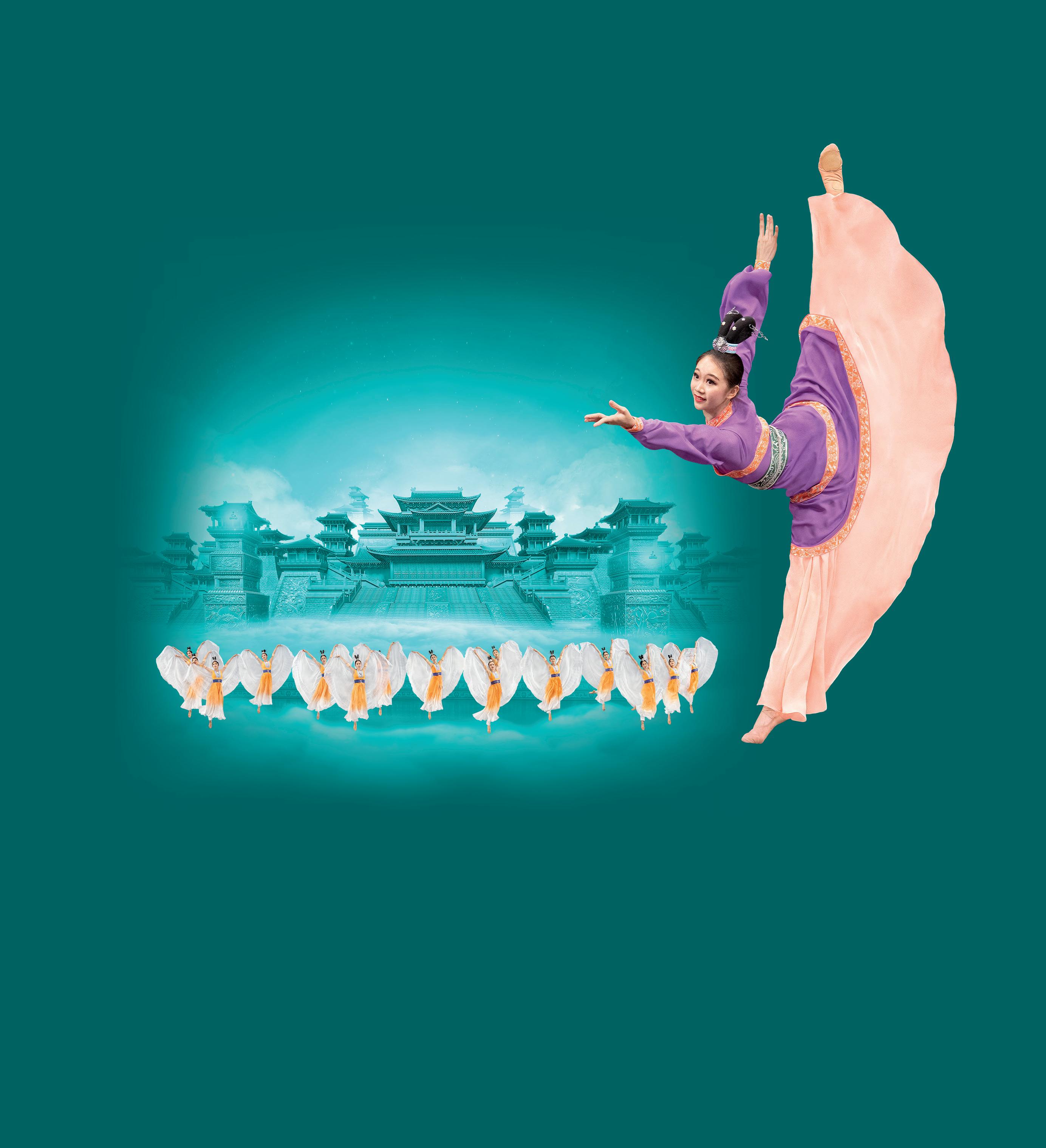
—Tony
“There is a massive power in this. It brings great hope...”
—Daniel Herman, former Minister of Culture of the Czech Republic

very enlightening!”
“Magnificent…
Robbins, motivational speaker
encourage everyone to see and all of us to learn from. ”
Karan, founder of DKNY “Indisputably a spectacle... jaw-dropping.”
Tribune Book your tickets to A Life-Changing Experience CHINA BEFORE COMMUNISM Announcing: New video platform from ShenYun— ShenYunZuoPin.com NOW – MAY 12, 2024 • UNITED STATES Visit website to find show dates near you: ShenYun.com We
Essence. To read the complete publication, subscribe today at AmericanEssence.net
“I
—Donna
—Chicago
American




























 RaeLynn at a horse ranch outside Nashville, Tenn.
RaeLynn at a horse ranch outside Nashville, Tenn.







 RaeLynn performs for the 2022 AmericaFest, at the Phoenix Convention Center, Arizona.
RaeLynn performs for the 2022 AmericaFest, at the Phoenix Convention Center, Arizona.
 Lynsi Snyder believes the most important aspect of In-N-Out’s business is the family’s strong faith in God.
Lynsi Snyder believes the most important aspect of In-N-Out’s business is the family’s strong faith in God.












 A photograph of Sgt. Alvin C. York, one of the most decorated American soldiers in World War I, between 1915 and 1920.
A photograph of Sgt. Alvin C. York, one of the most decorated American soldiers in World War I, between 1915 and 1920.






 The inventor of basketball, James Naismith, stands in a field carrying a ball and a peach basket, circa early 1900s.
The inventor of basketball, James Naismith, stands in a field carrying a ball and a peach basket, circa early 1900s.










 Vietnamese American homesteader Sophia Nguyen Eng with her husband, Tim, at their farm in eastern Tennessee.
Vietnamese American homesteader Sophia Nguyen Eng with her husband, Tim, at their farm in eastern Tennessee.














 A sailboat regatta in Navarre Beach. The town is ideal for “snowbirds” looking to escape cold weather.
A sailboat regatta in Navarre Beach. The town is ideal for “snowbirds” looking to escape cold weather.





